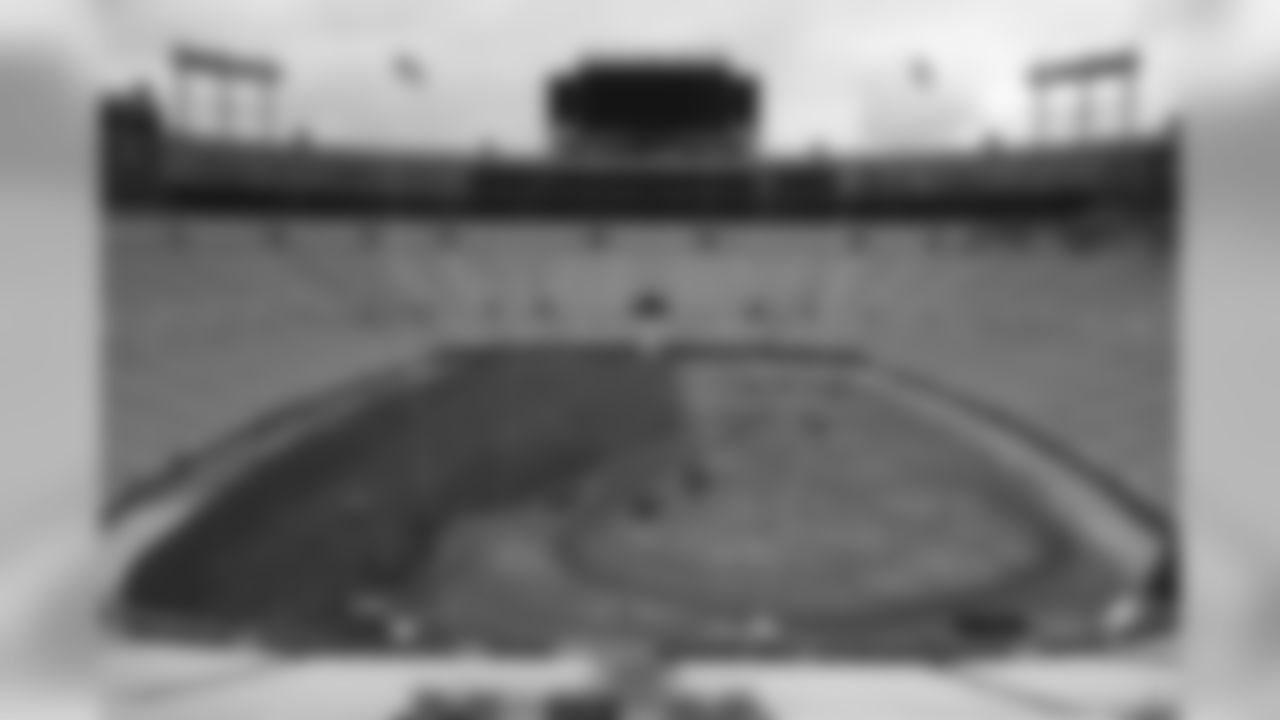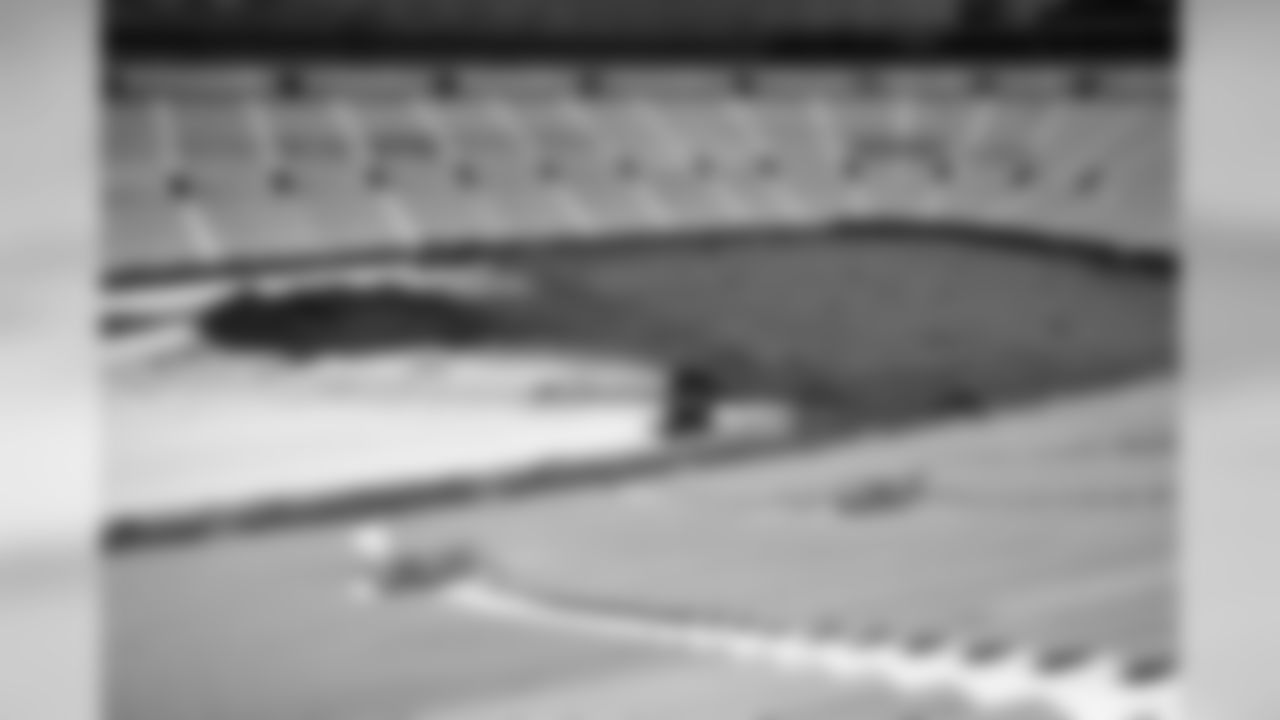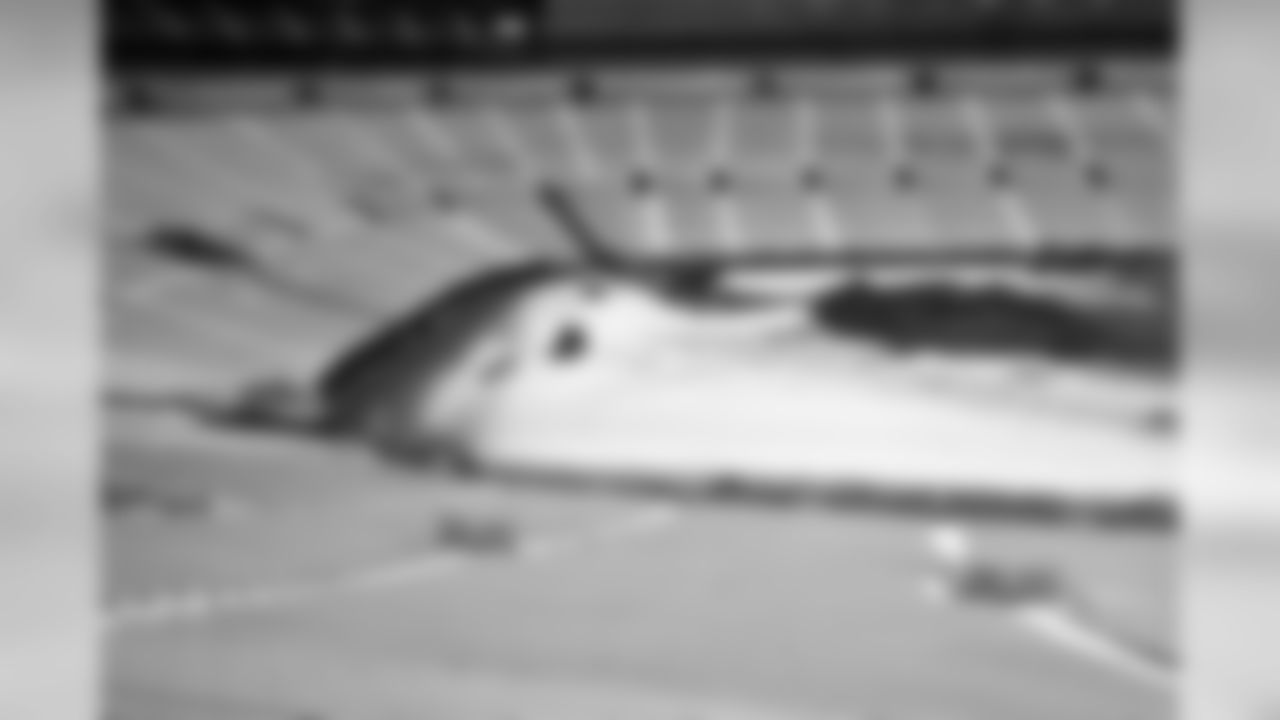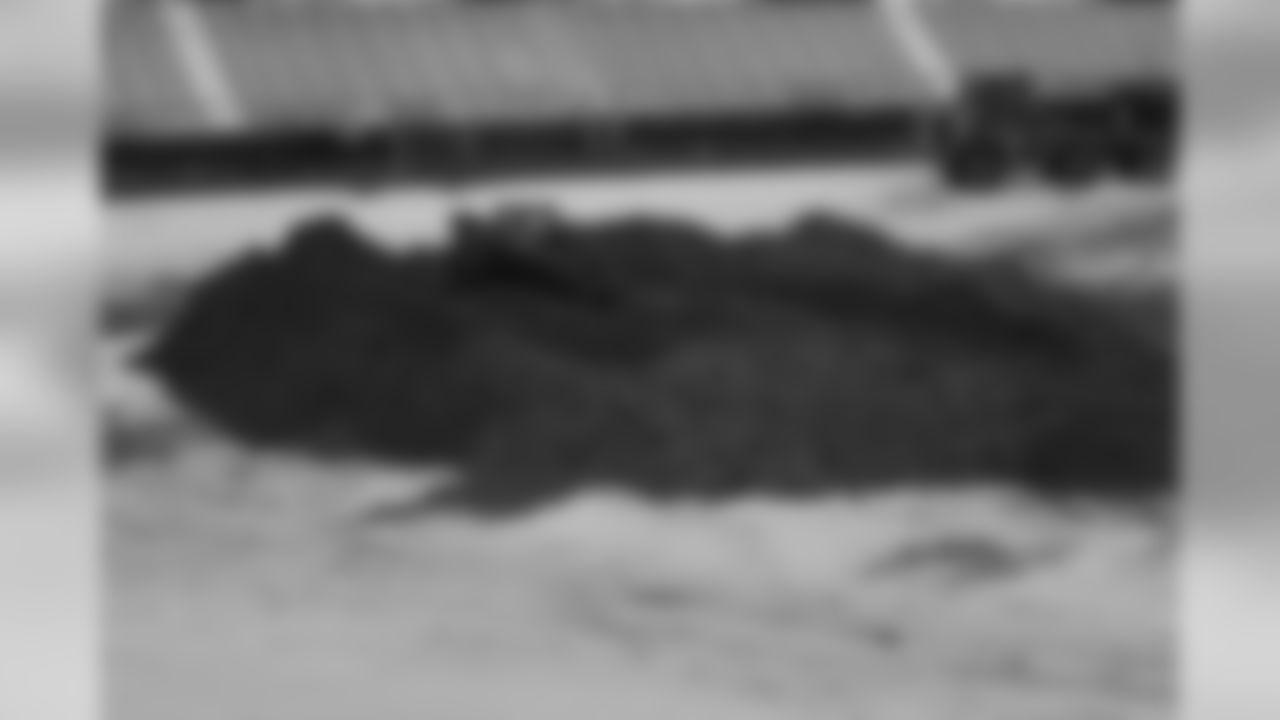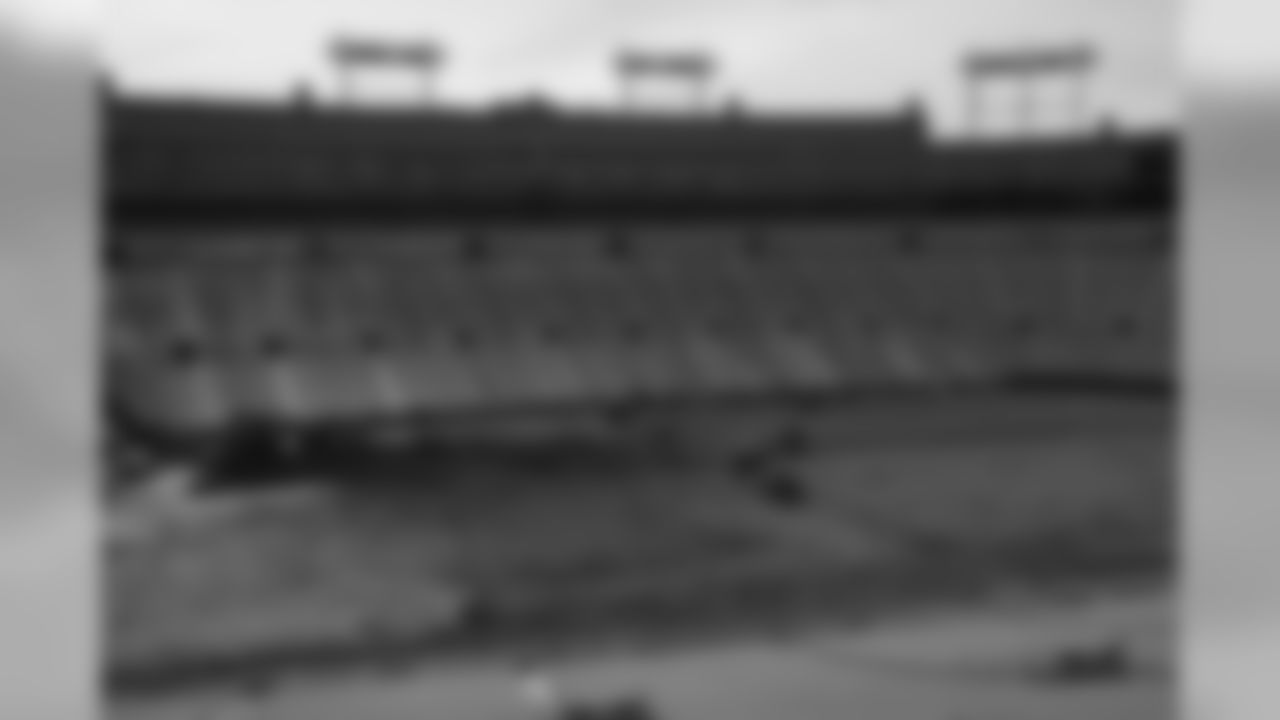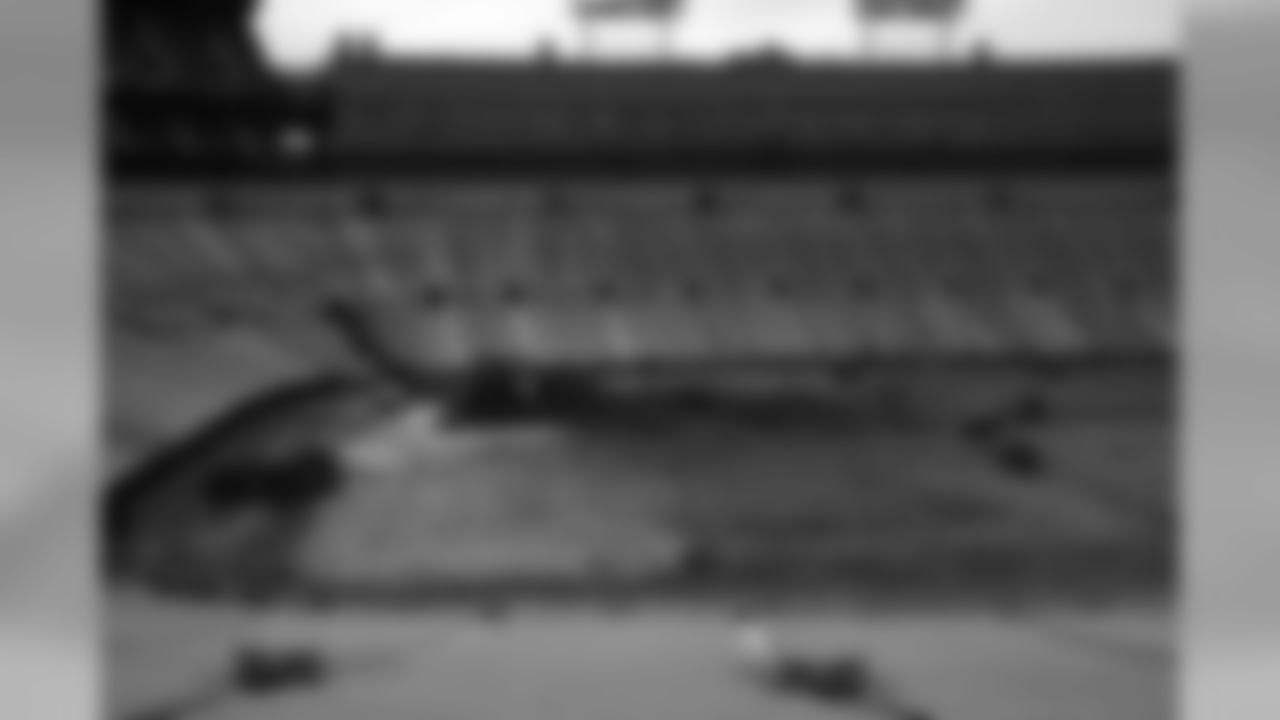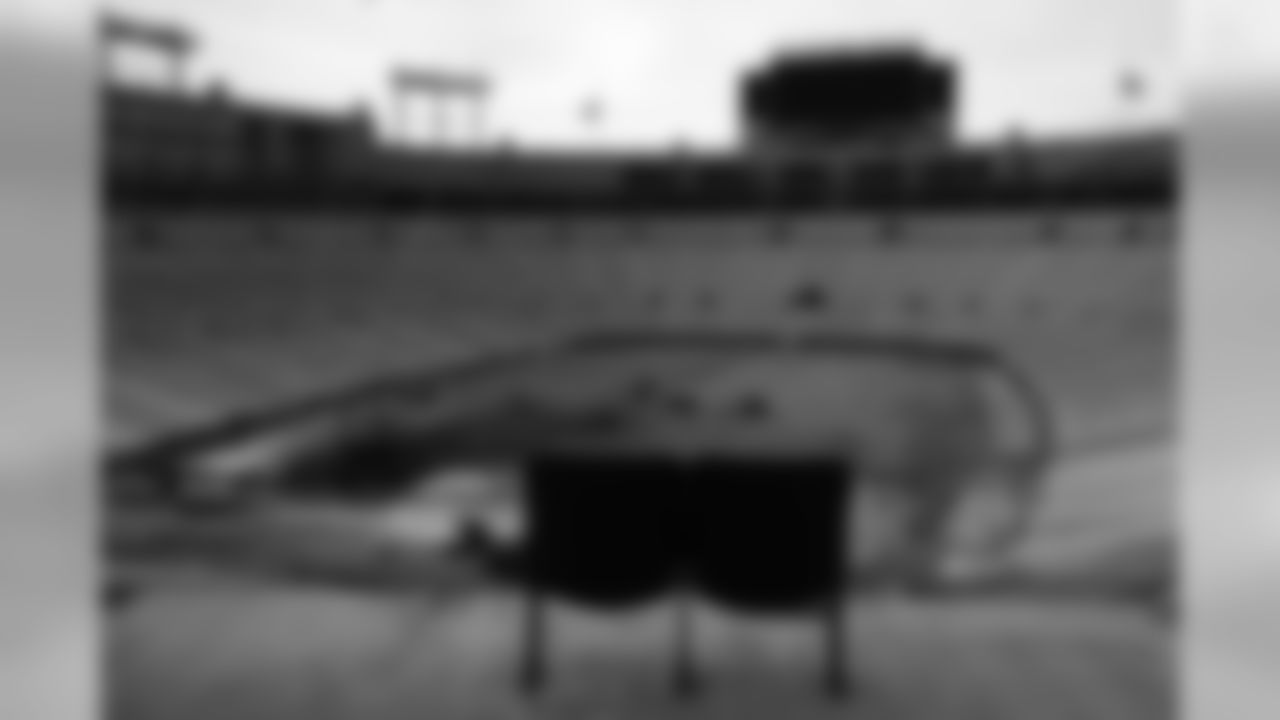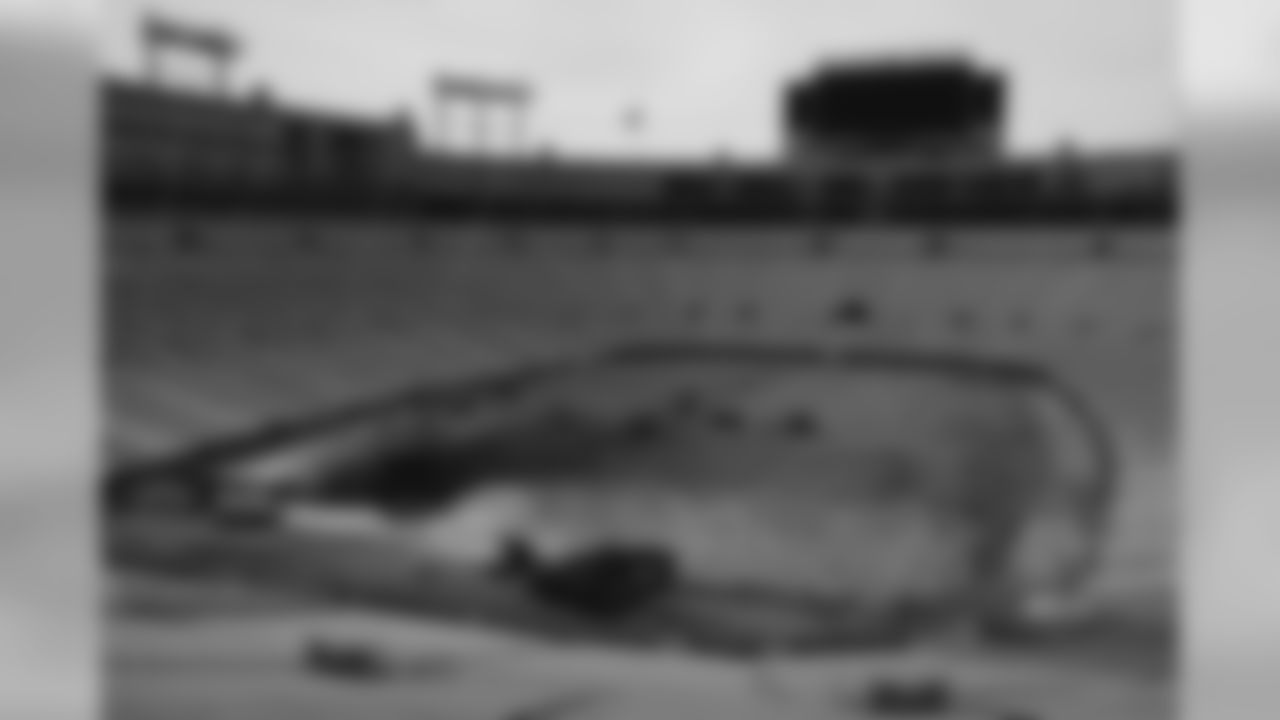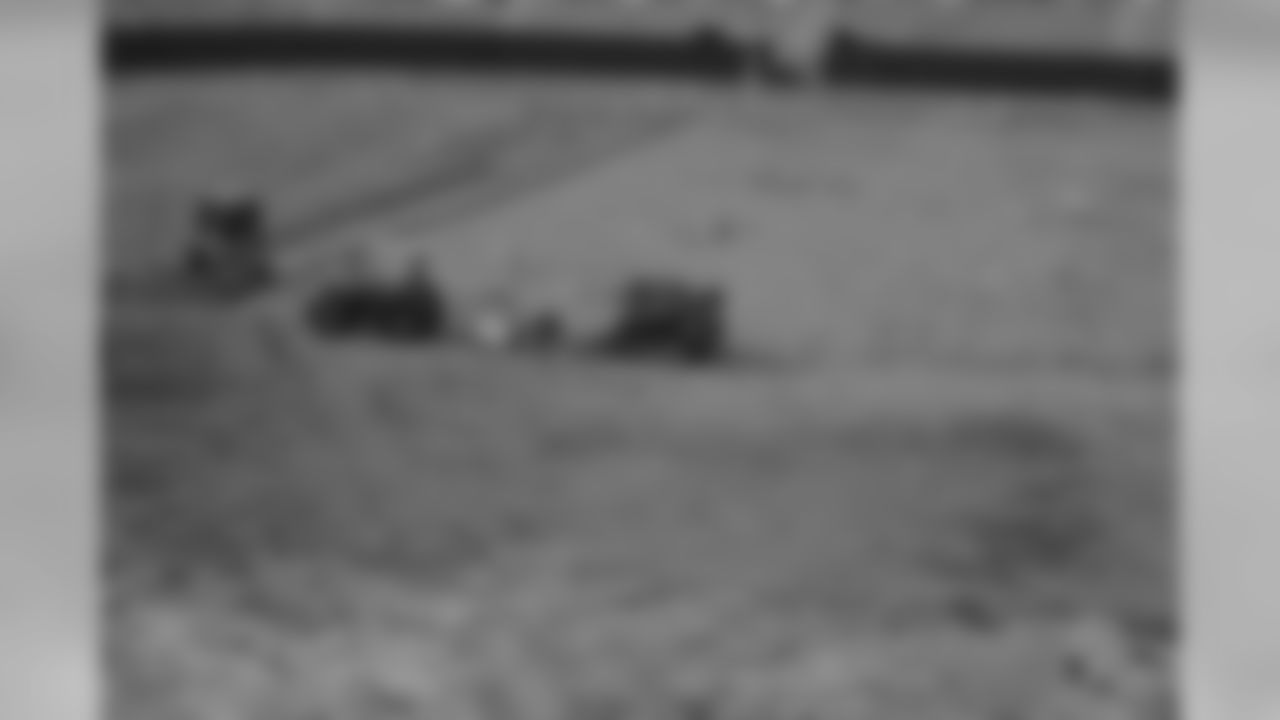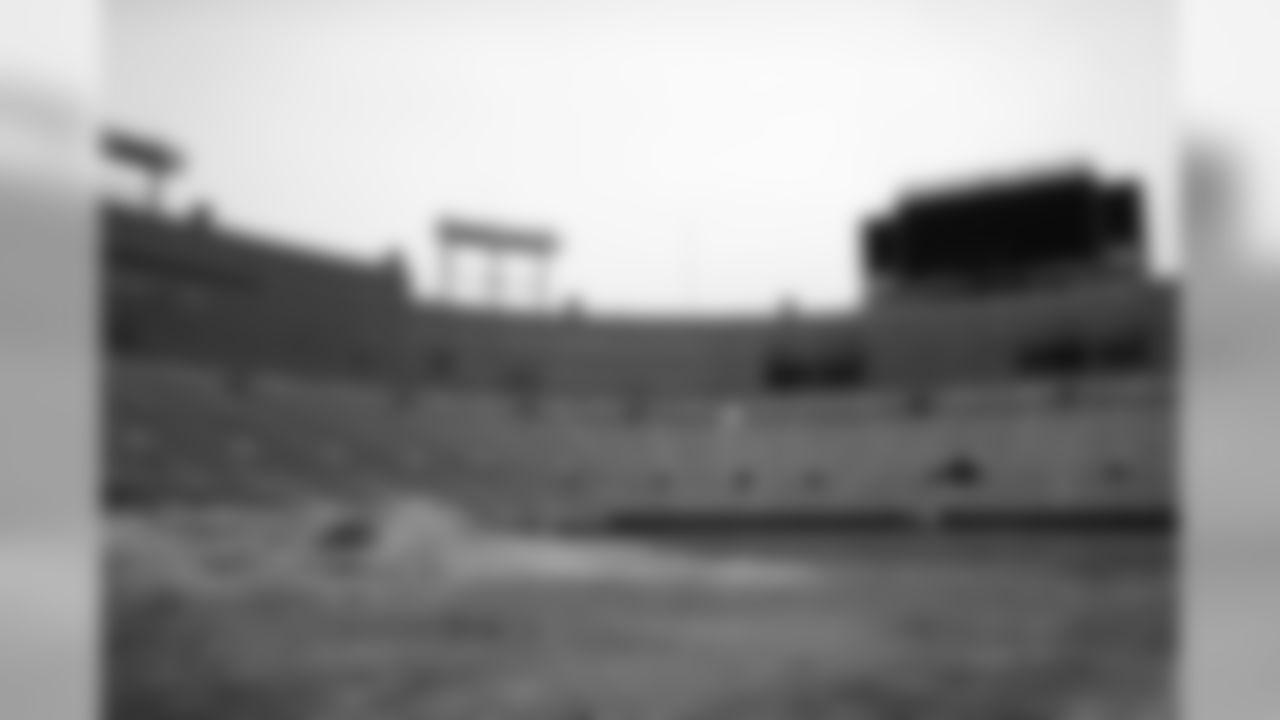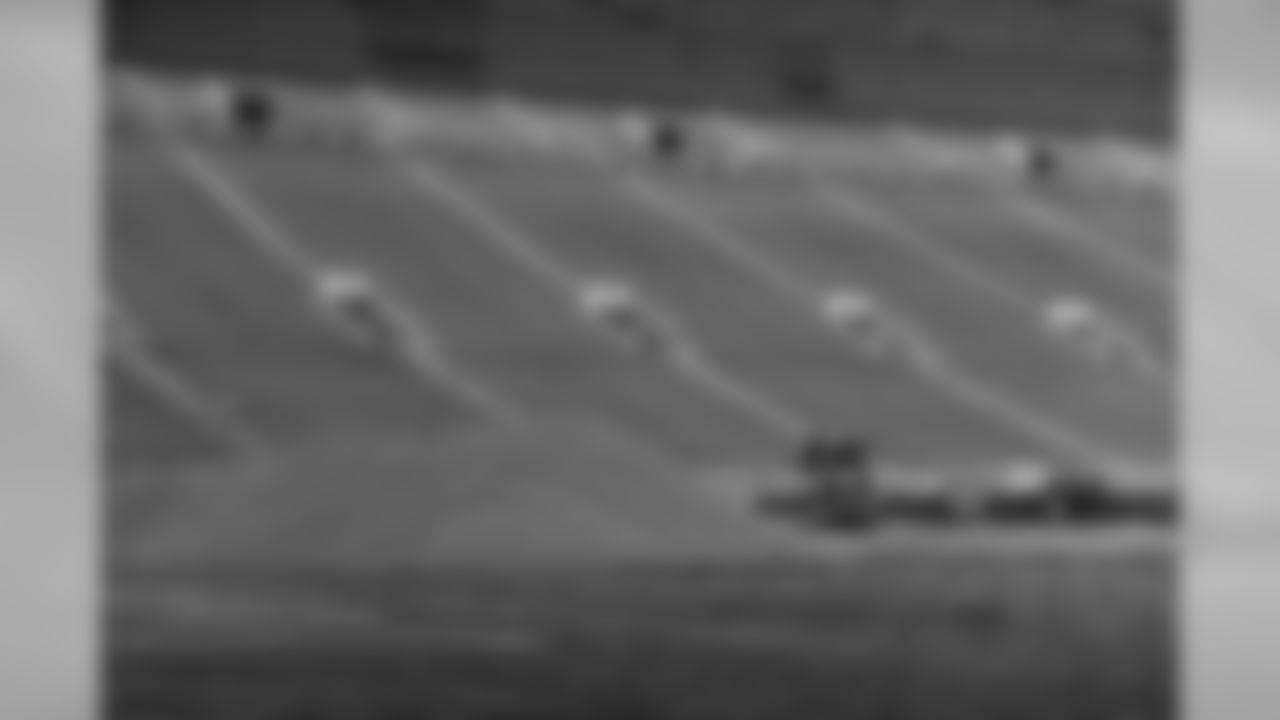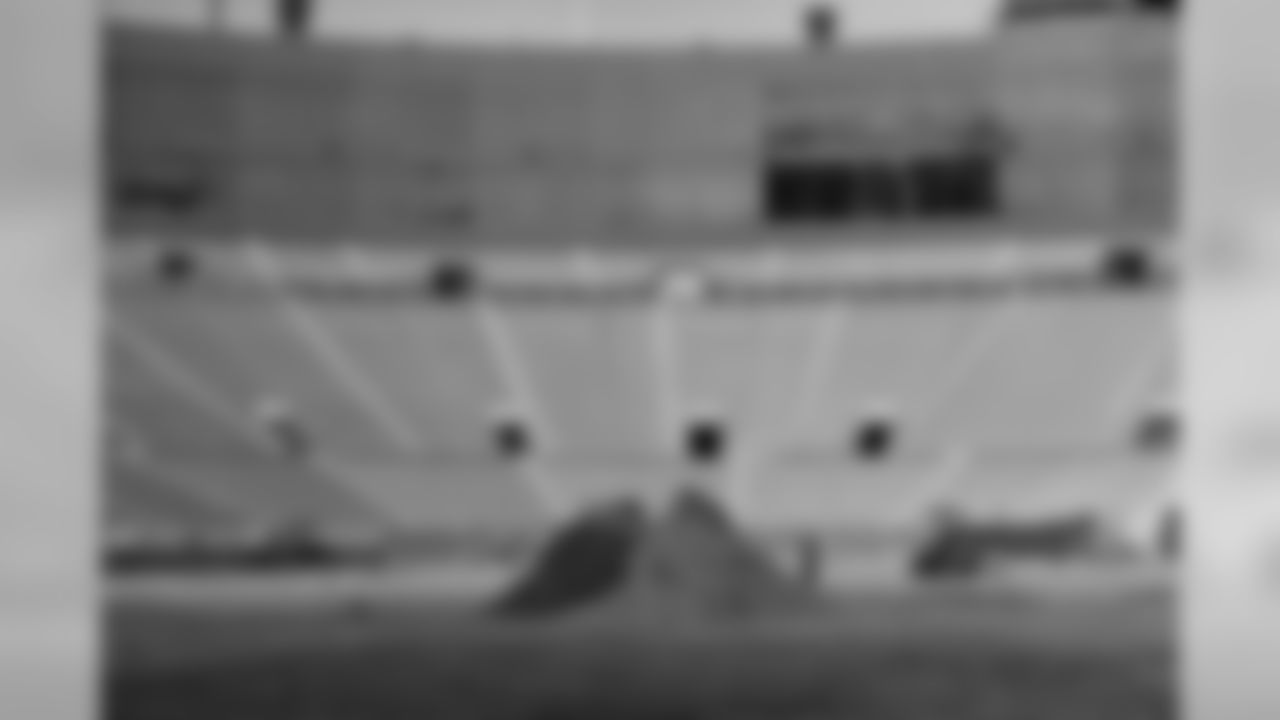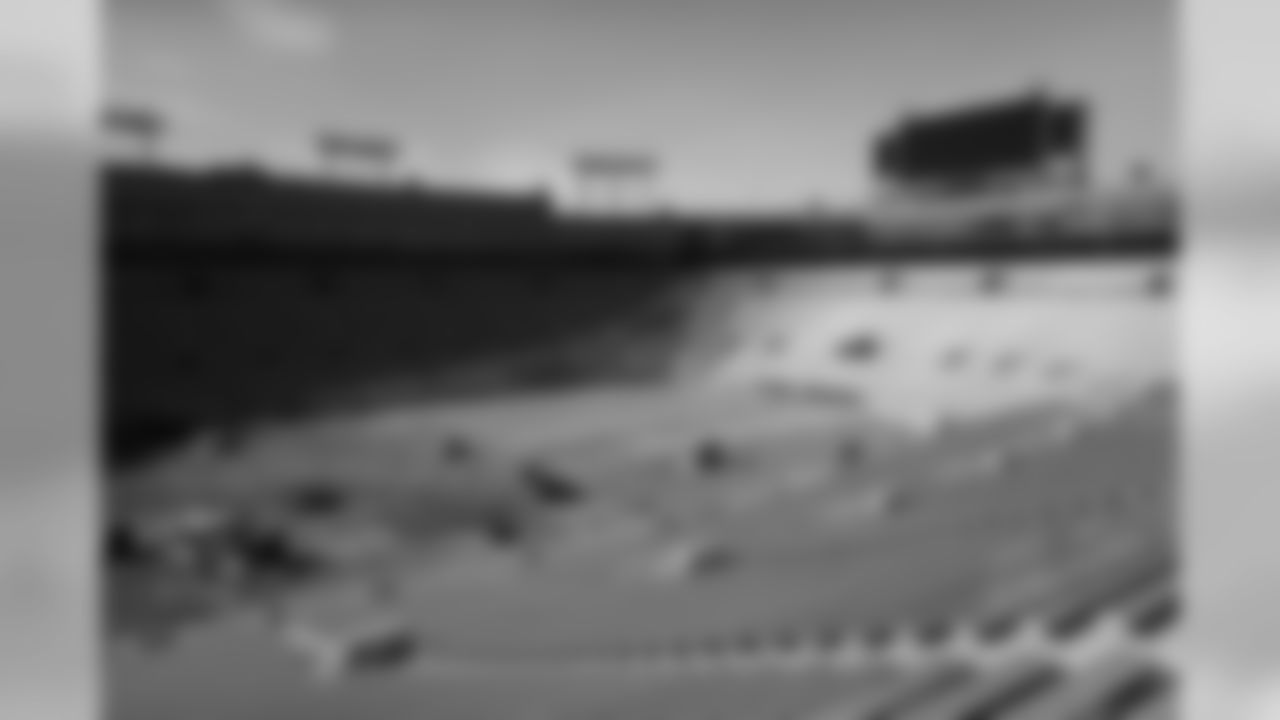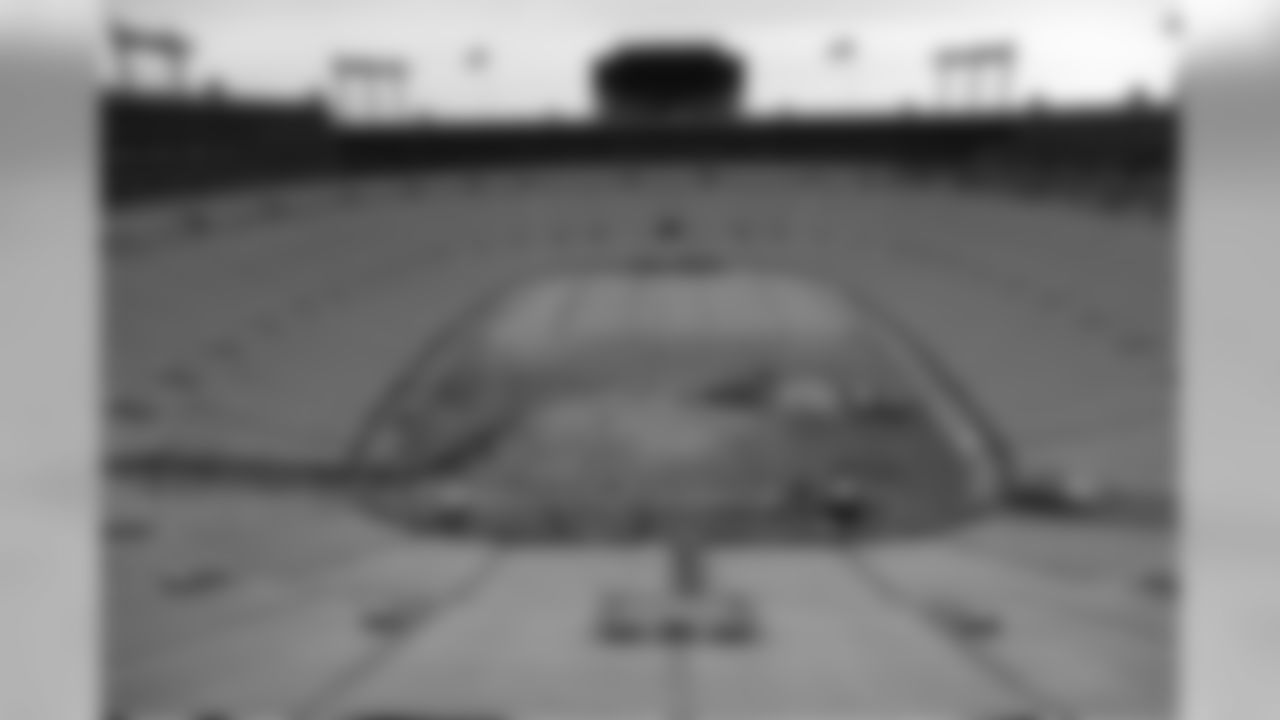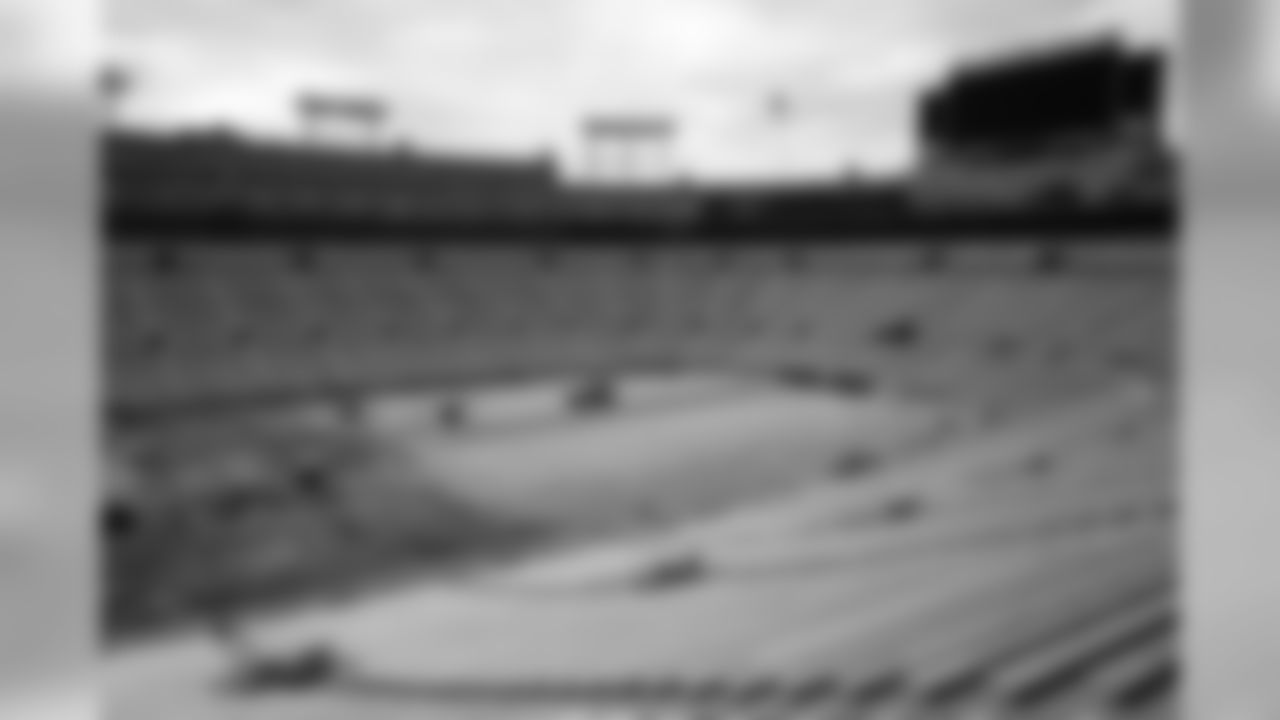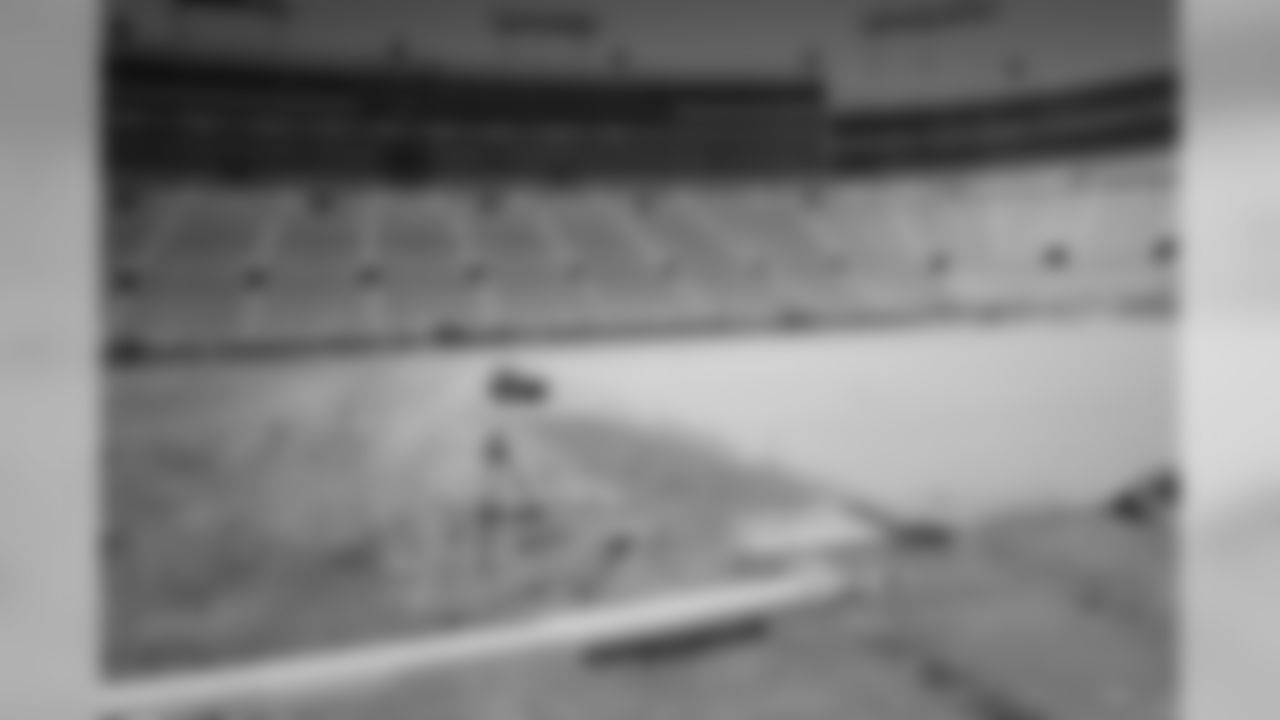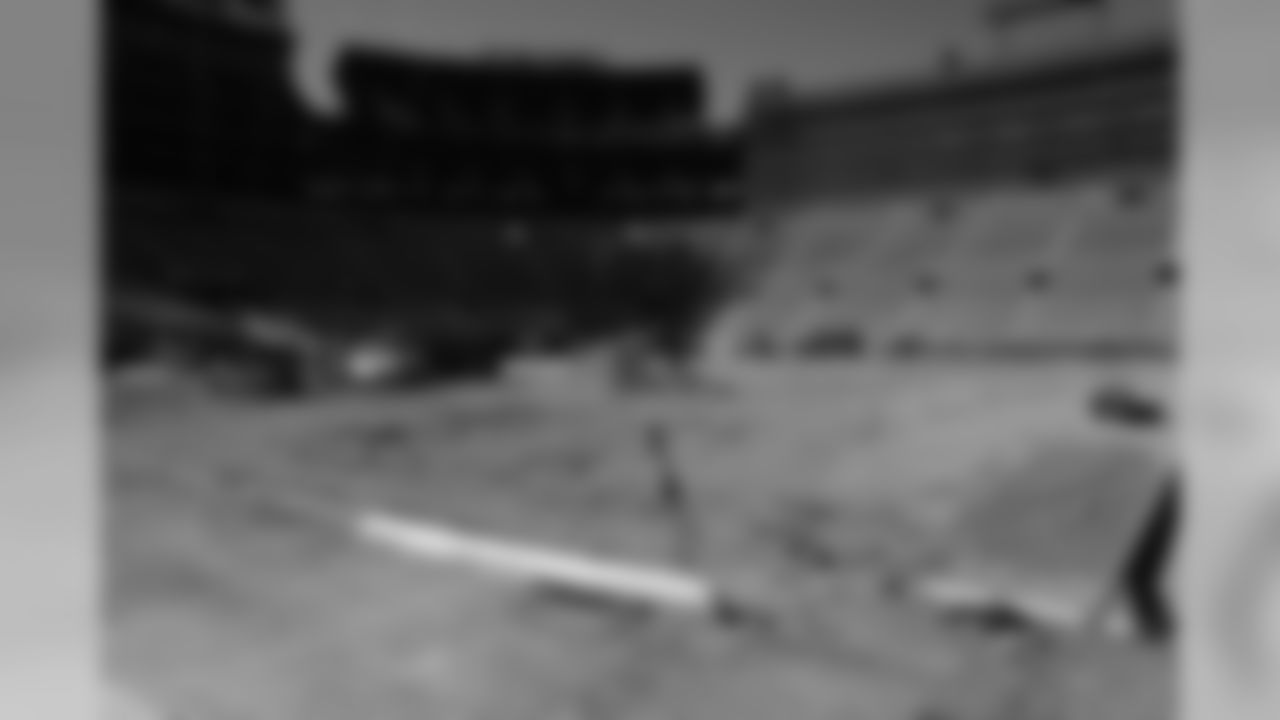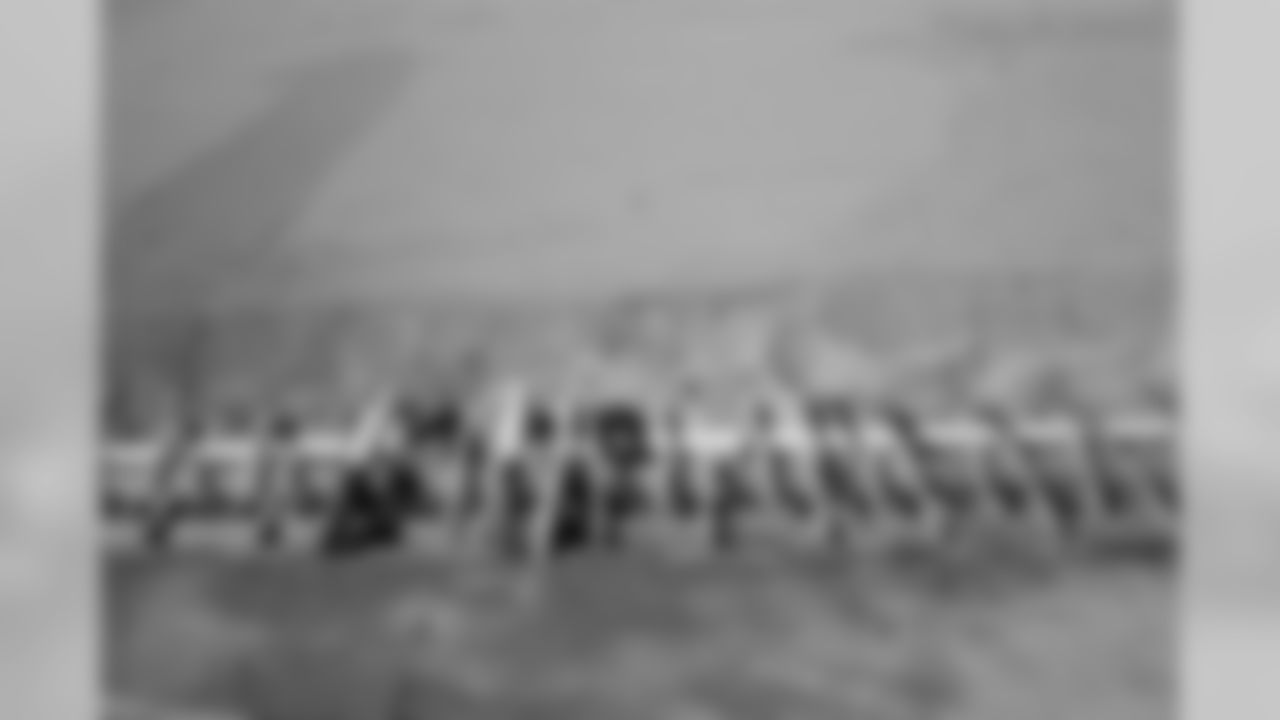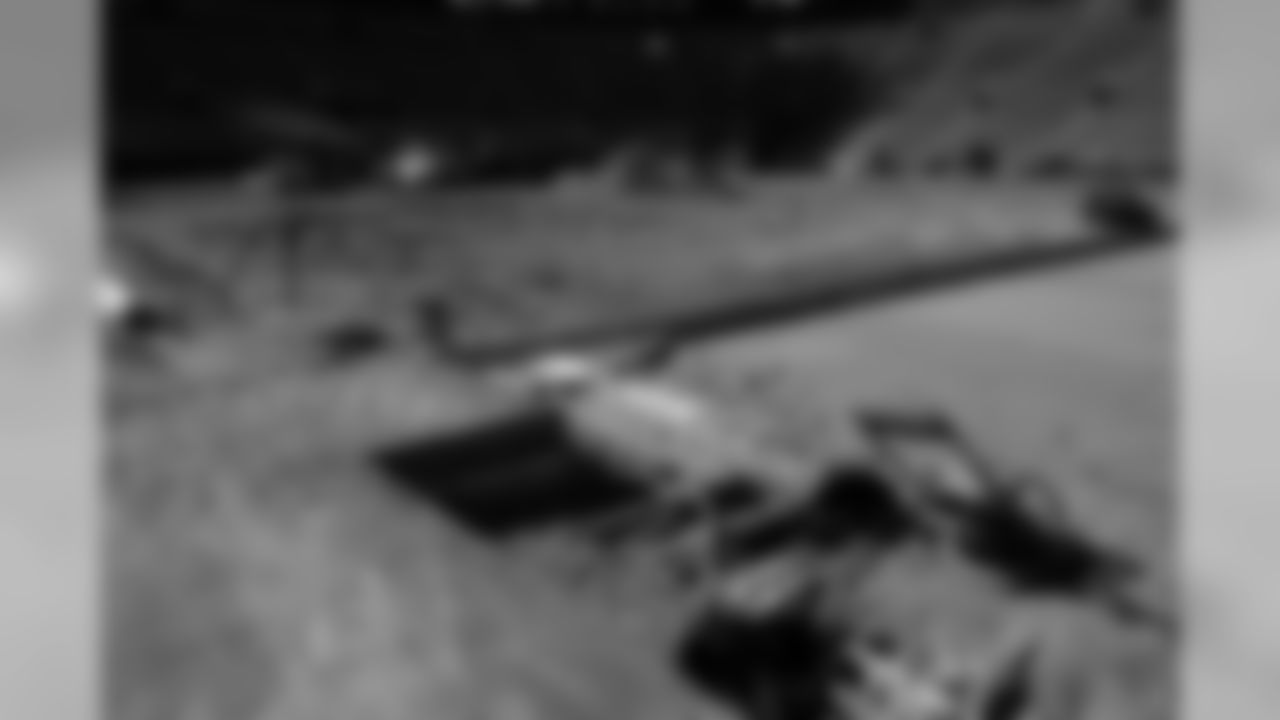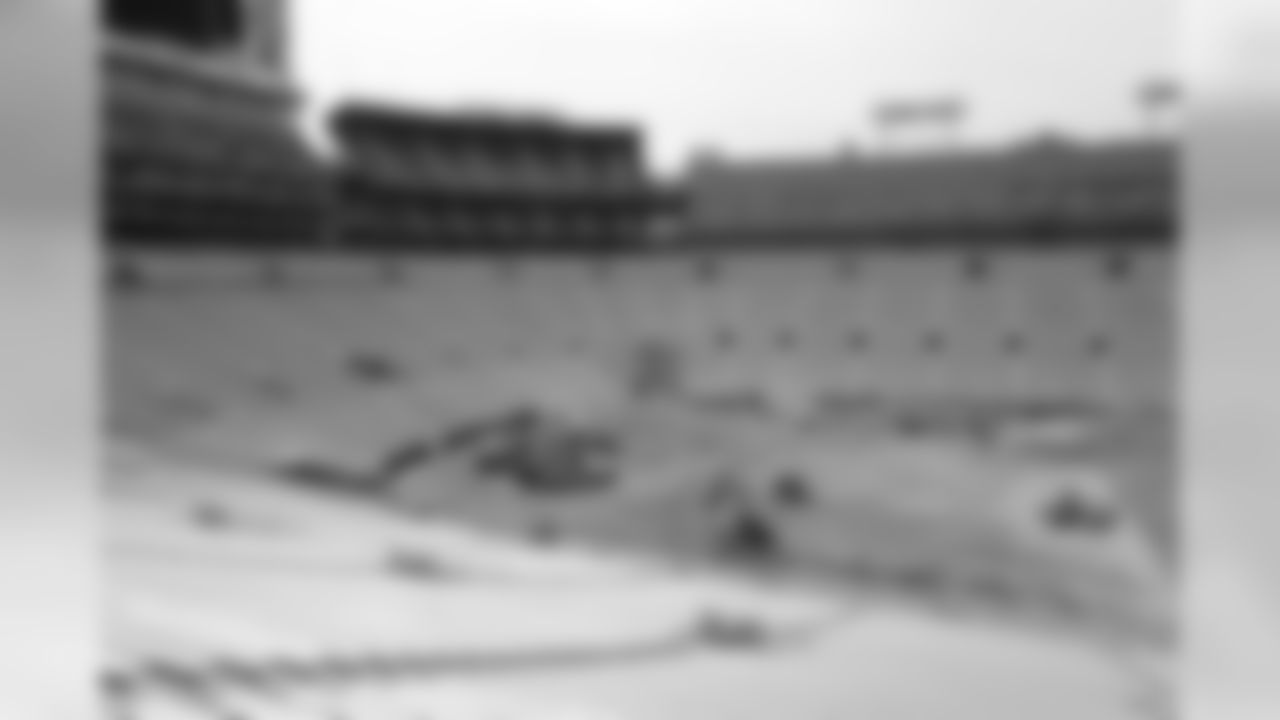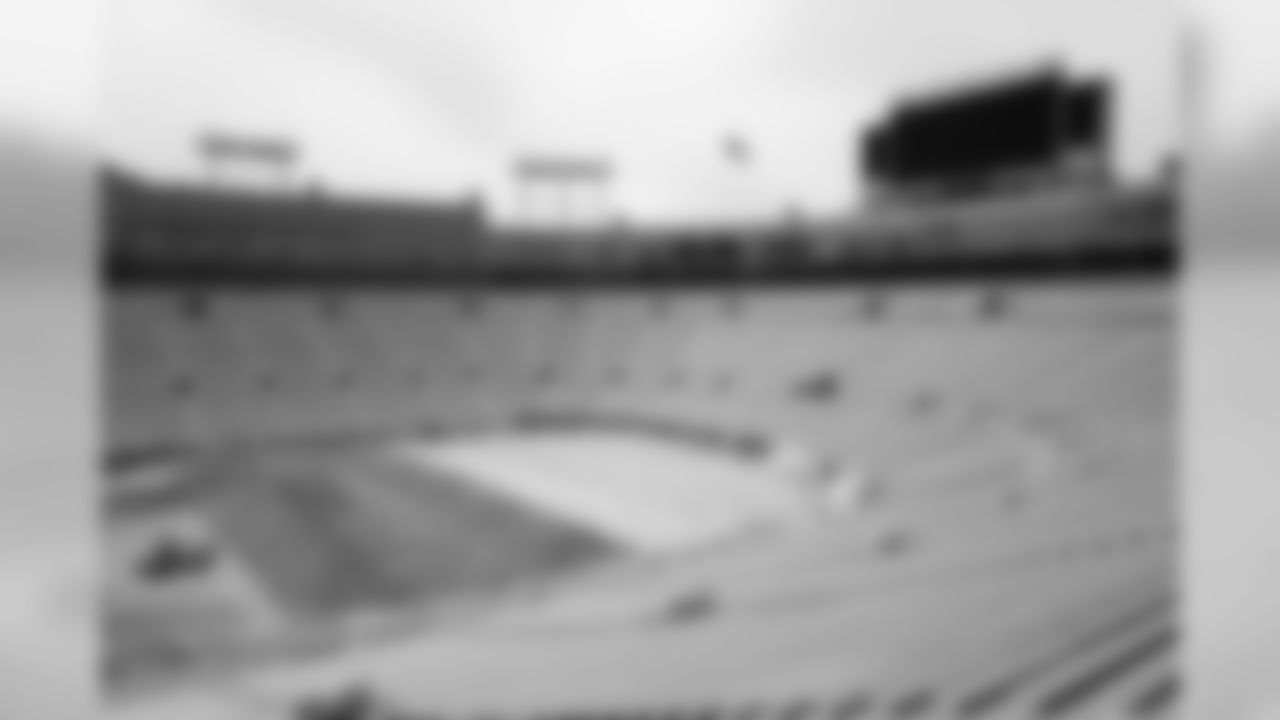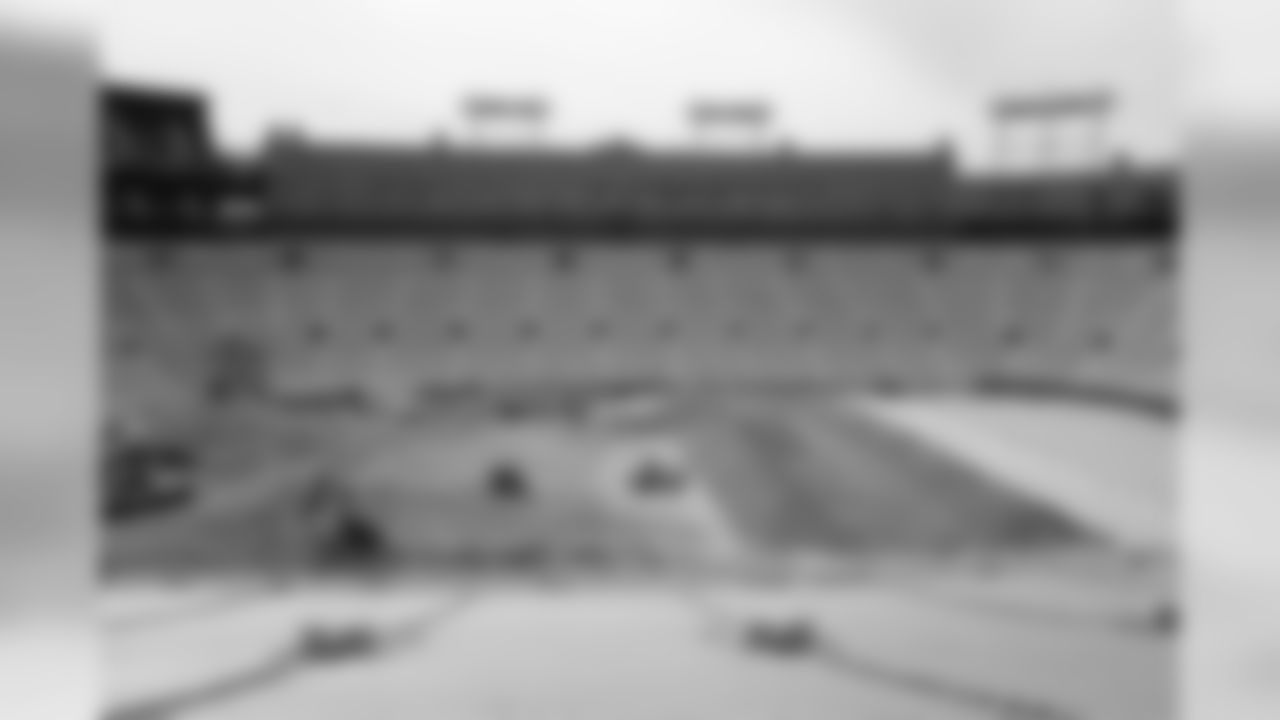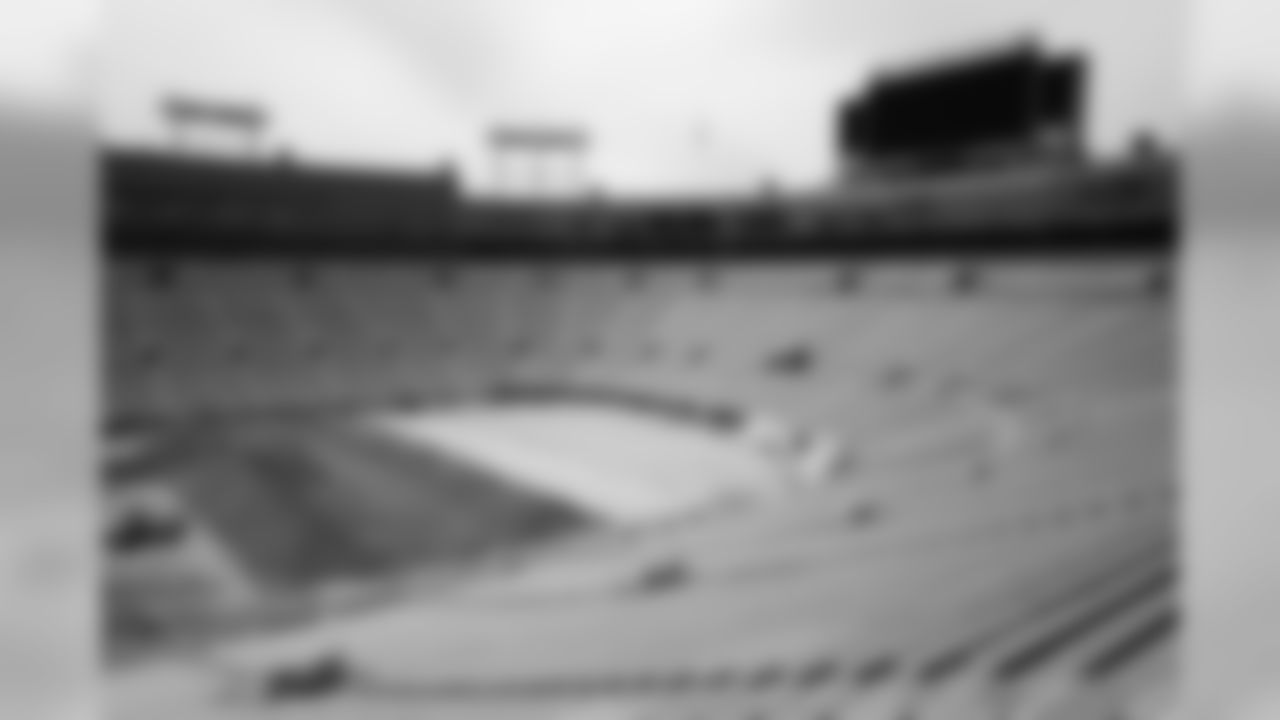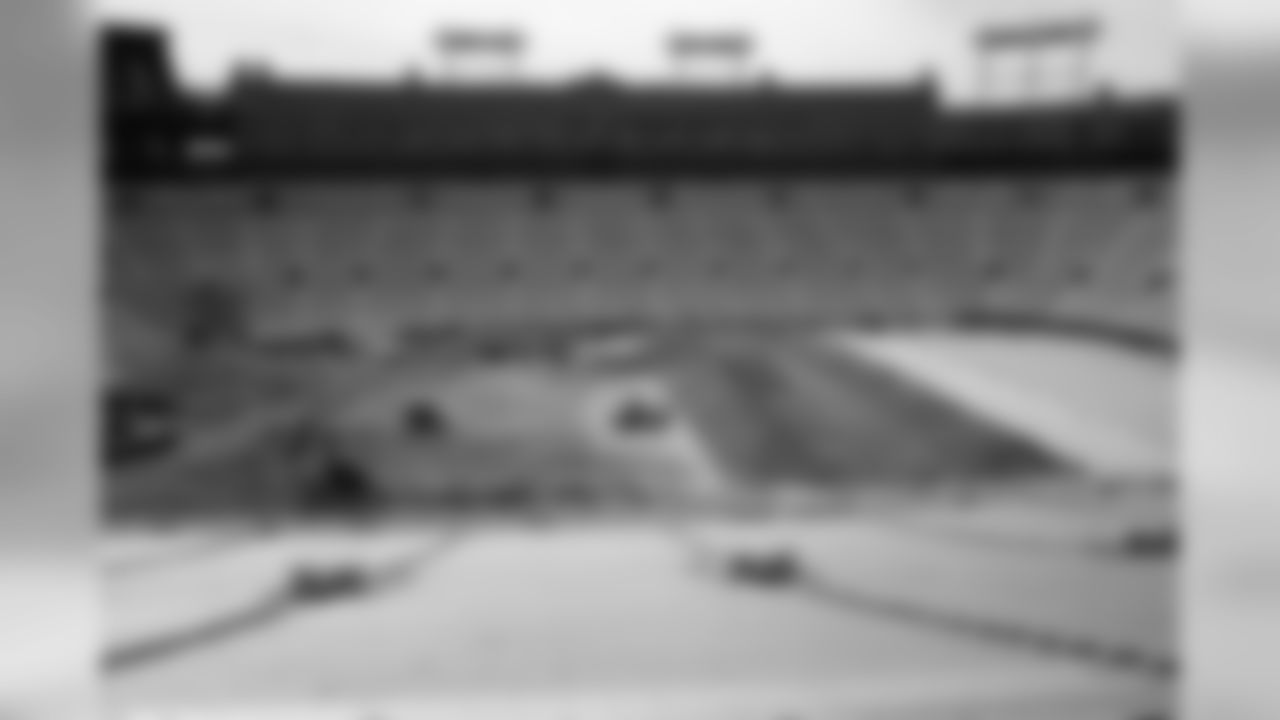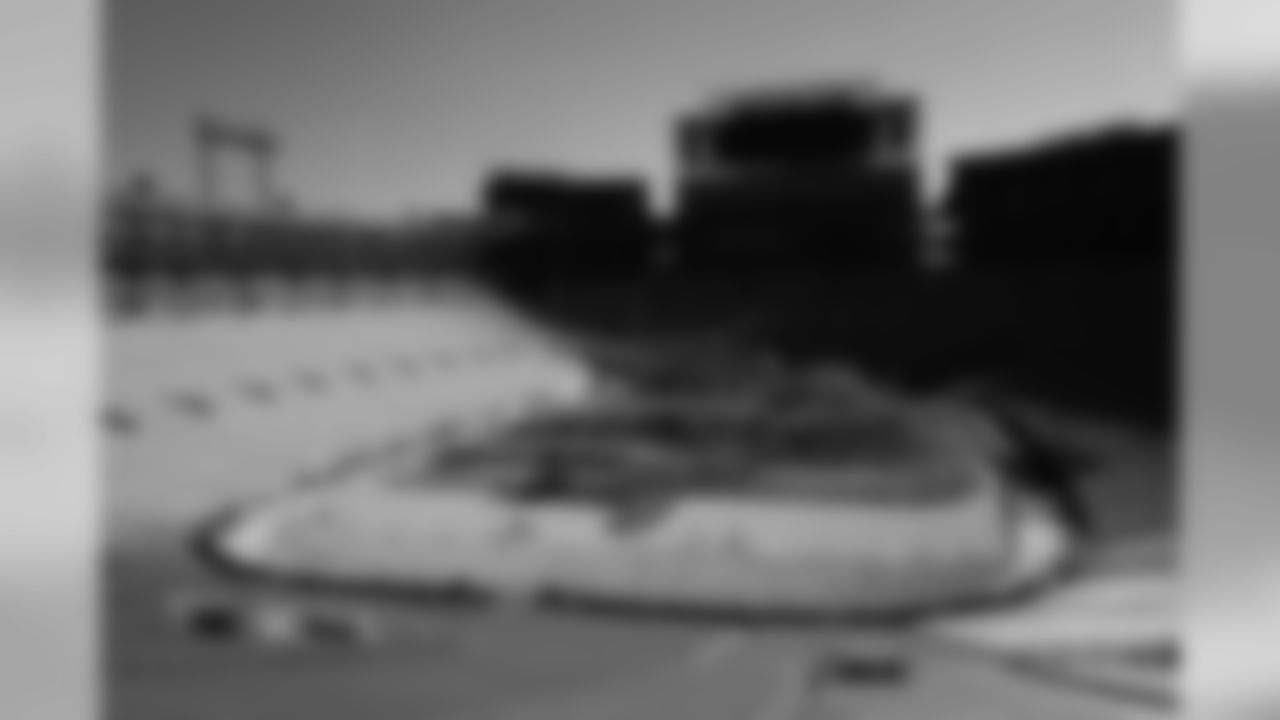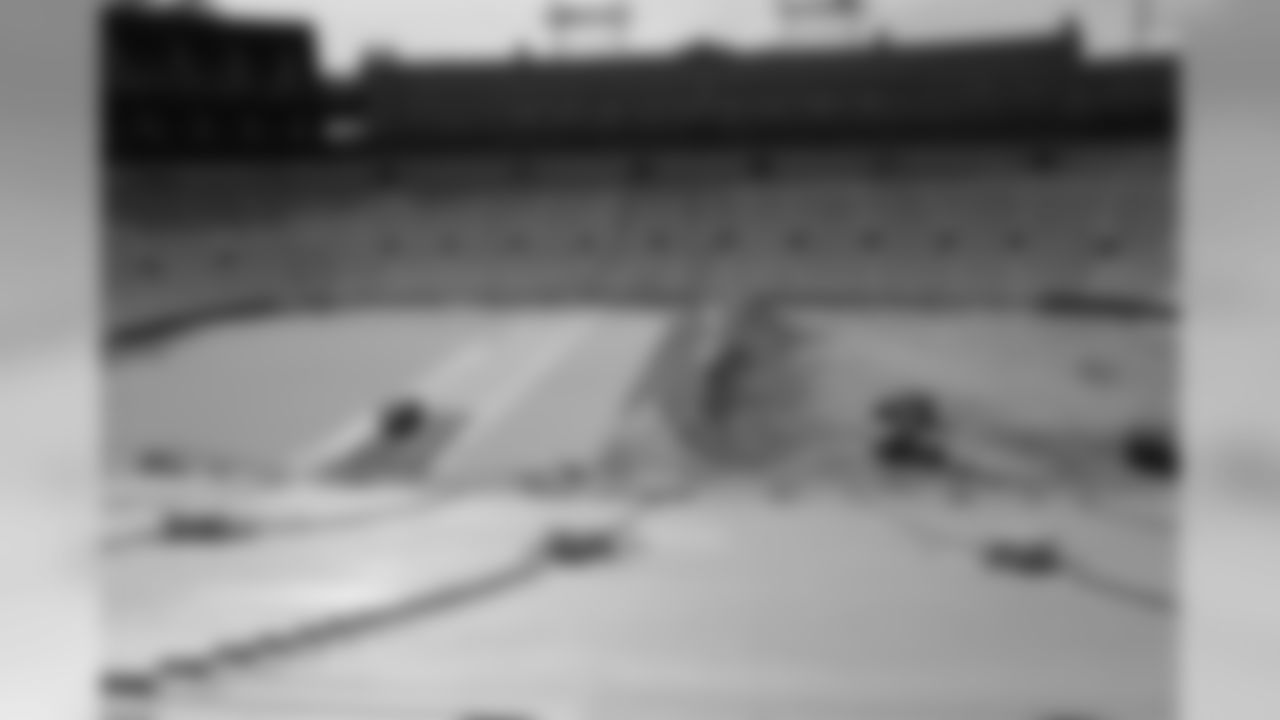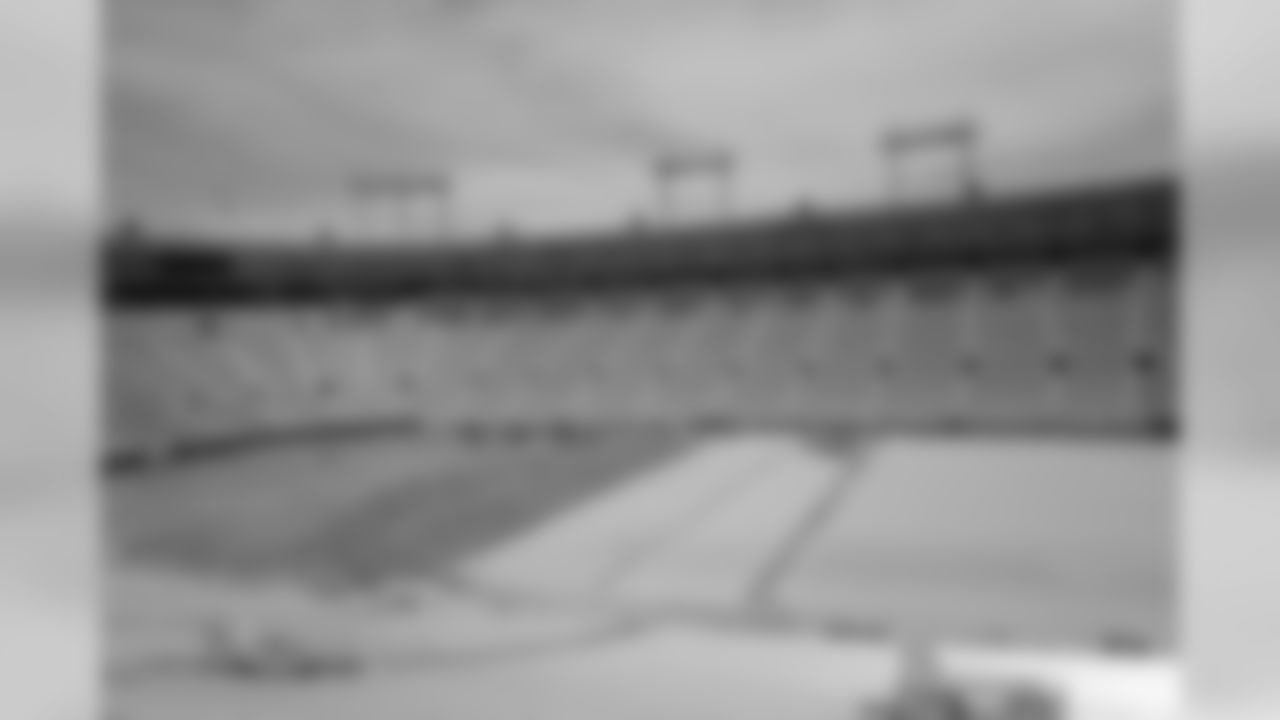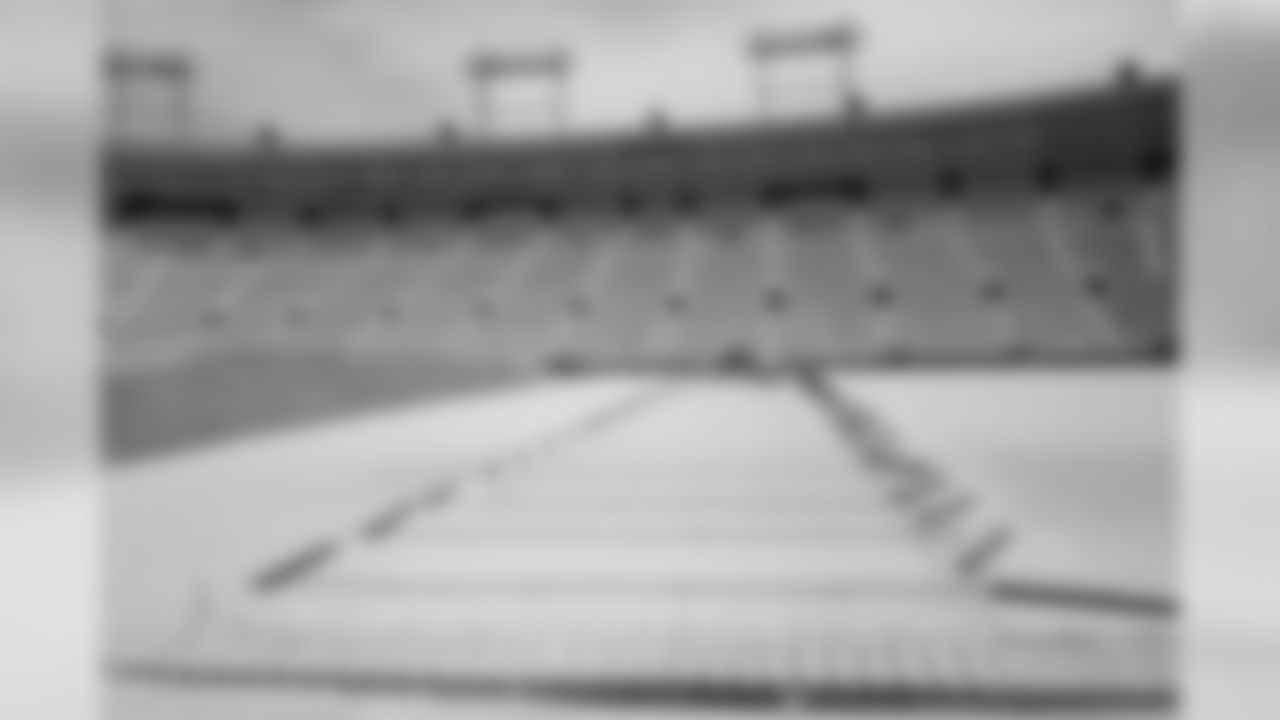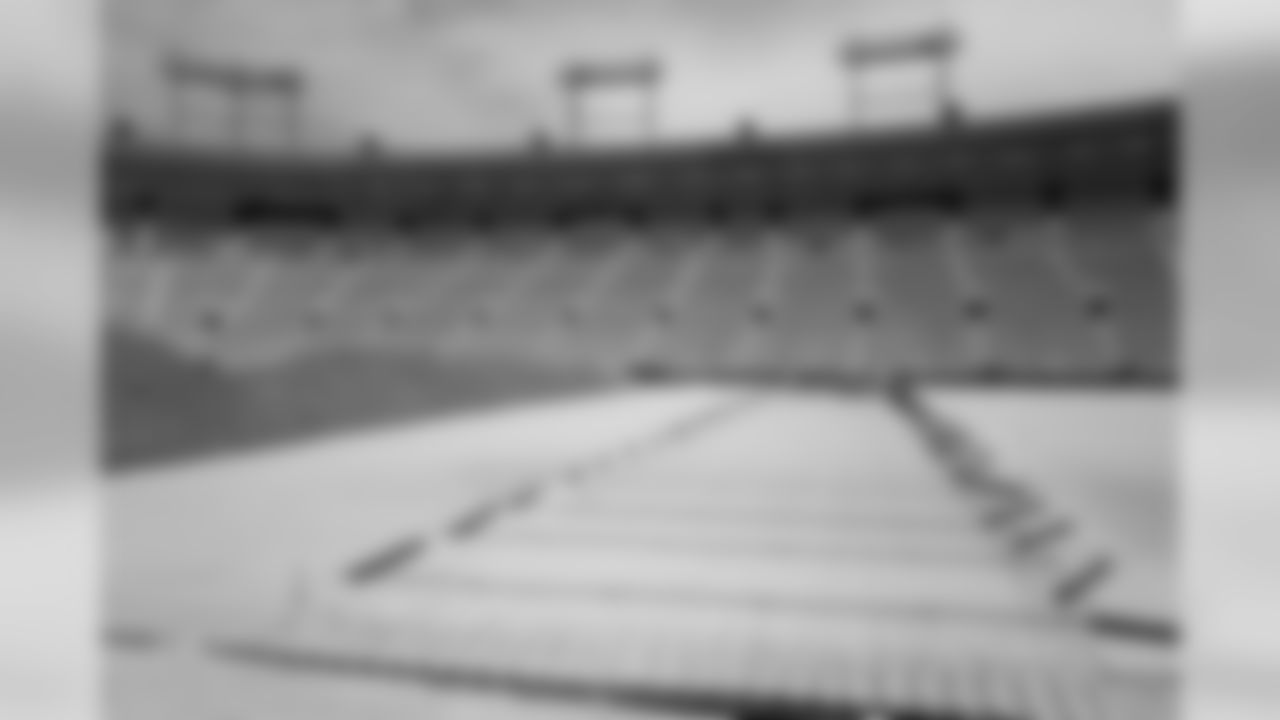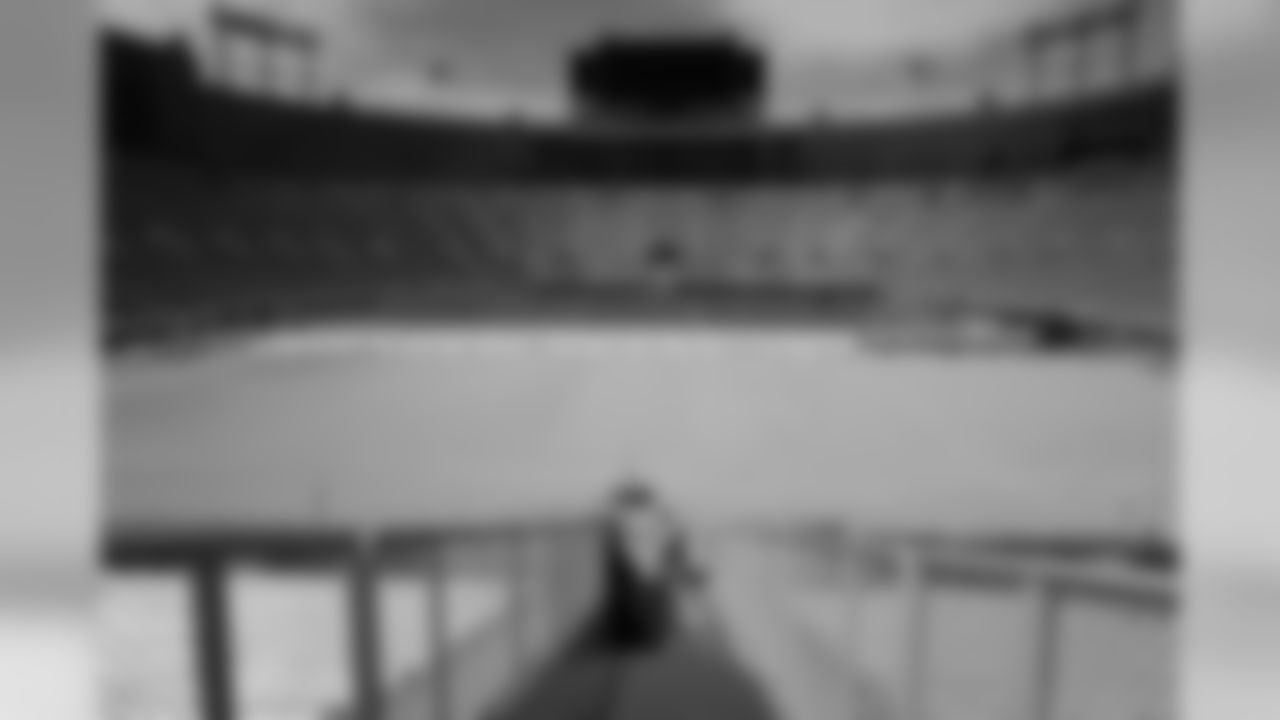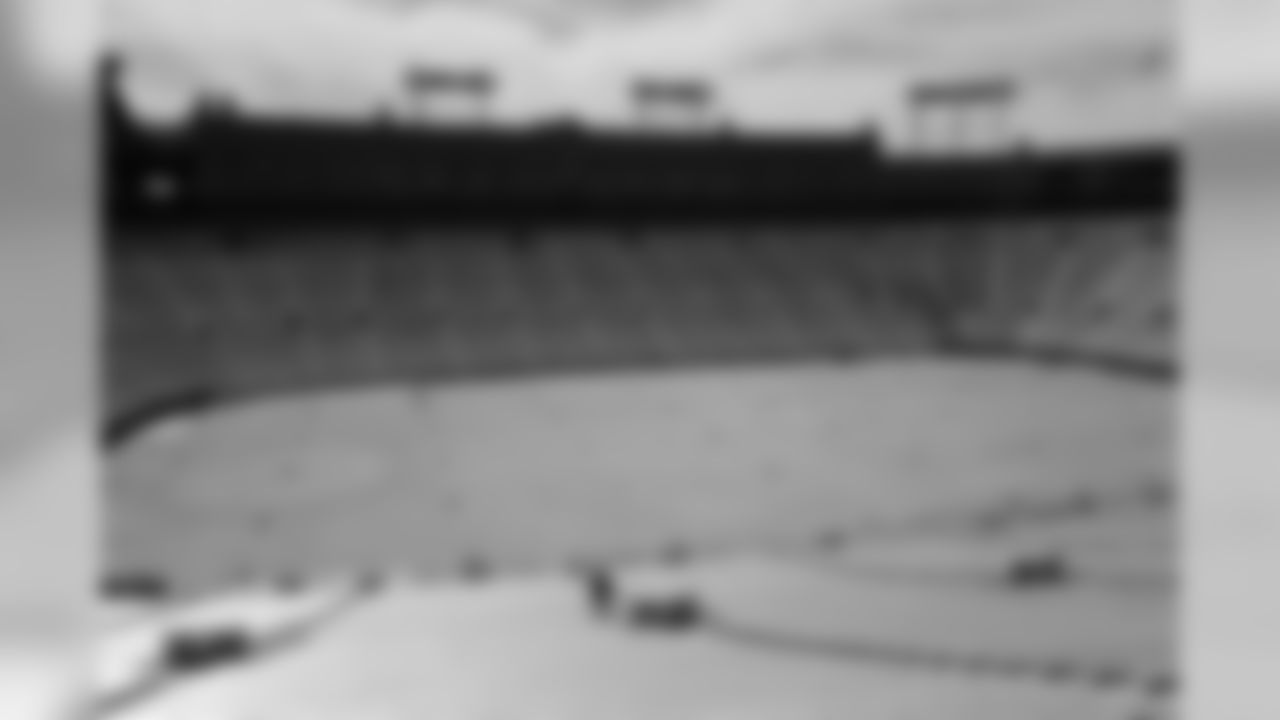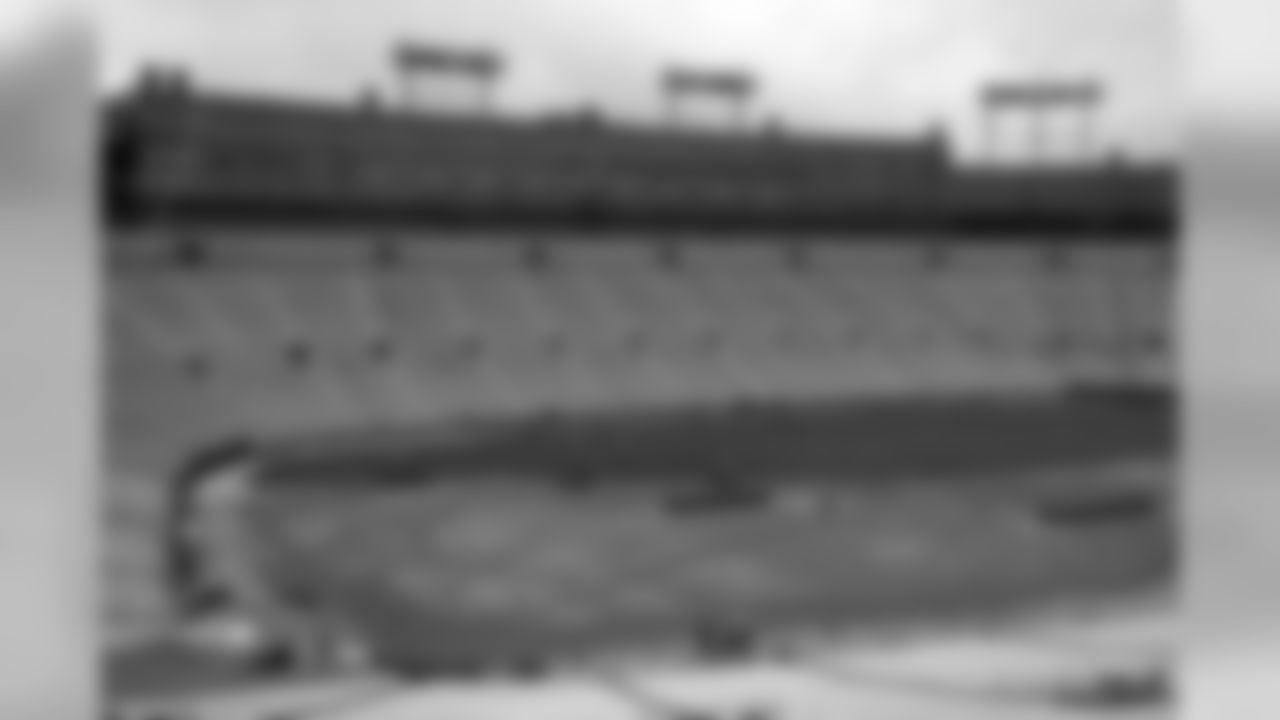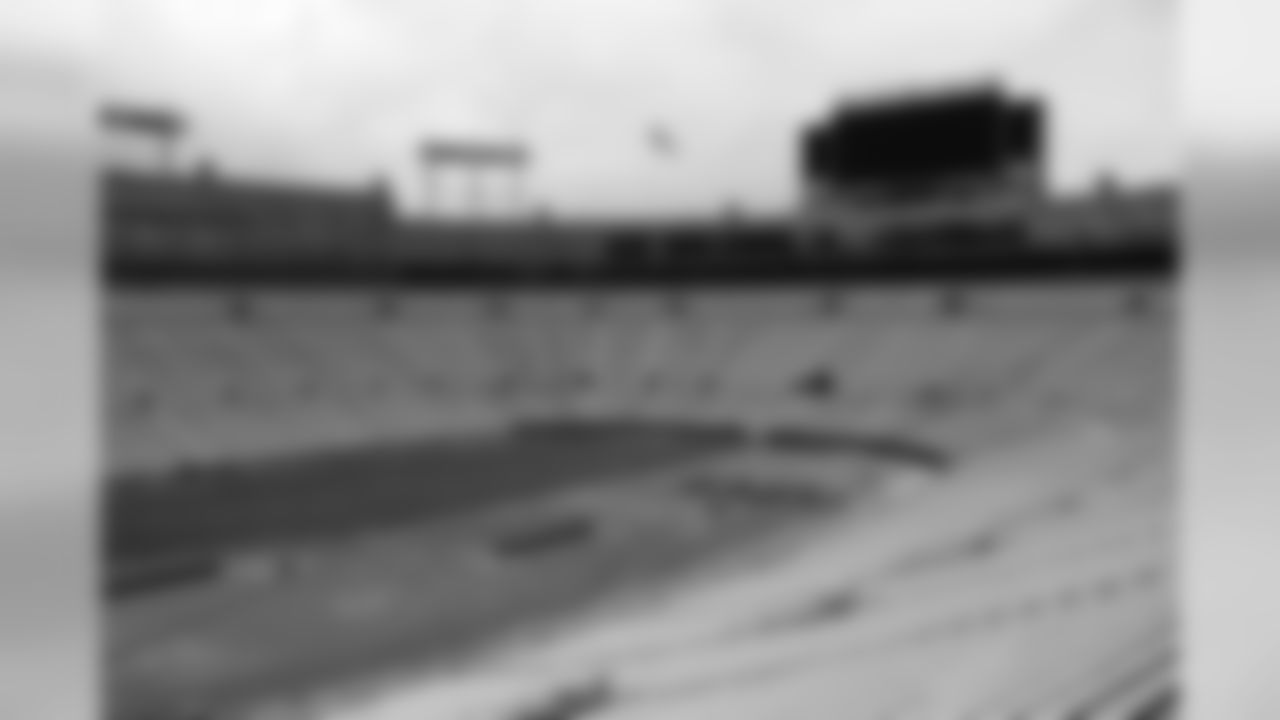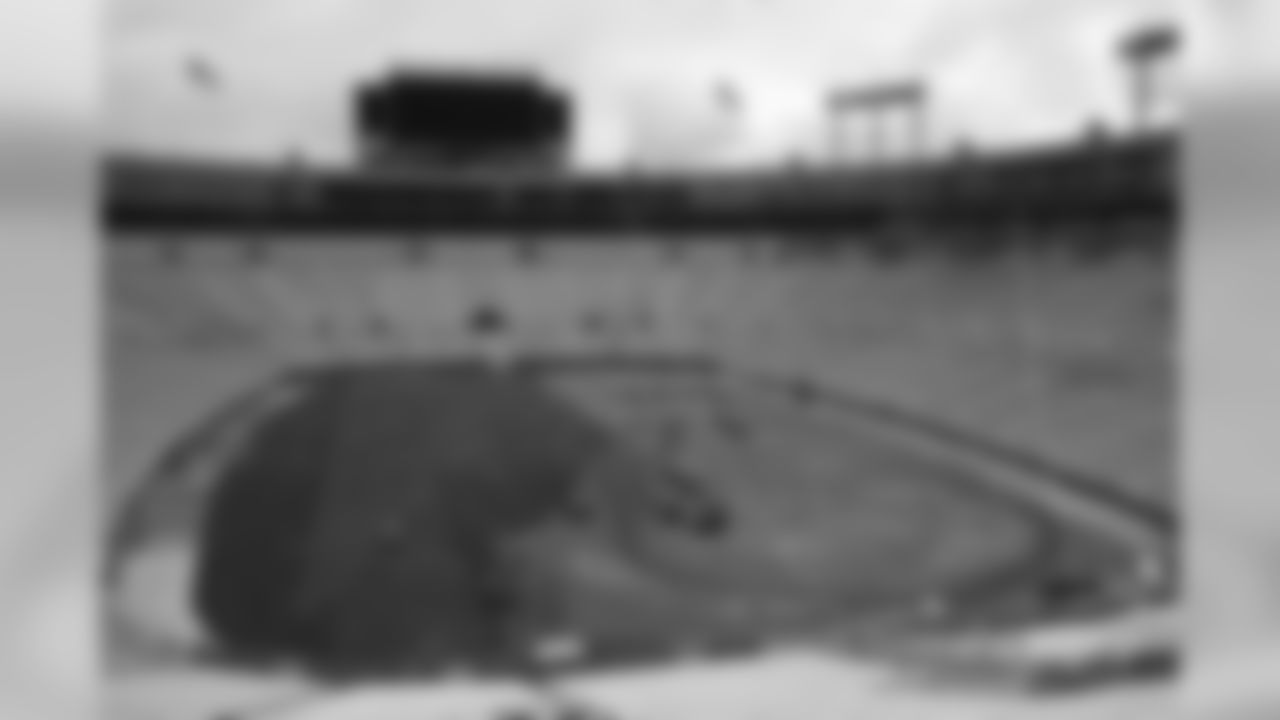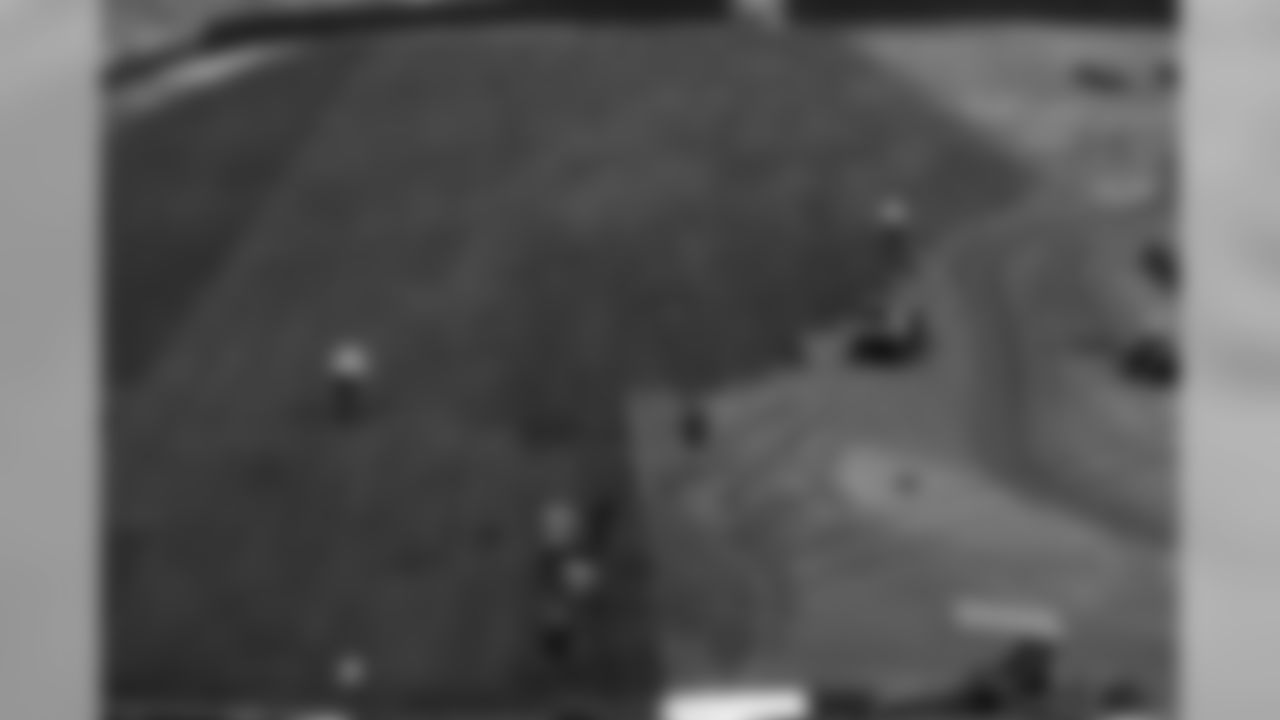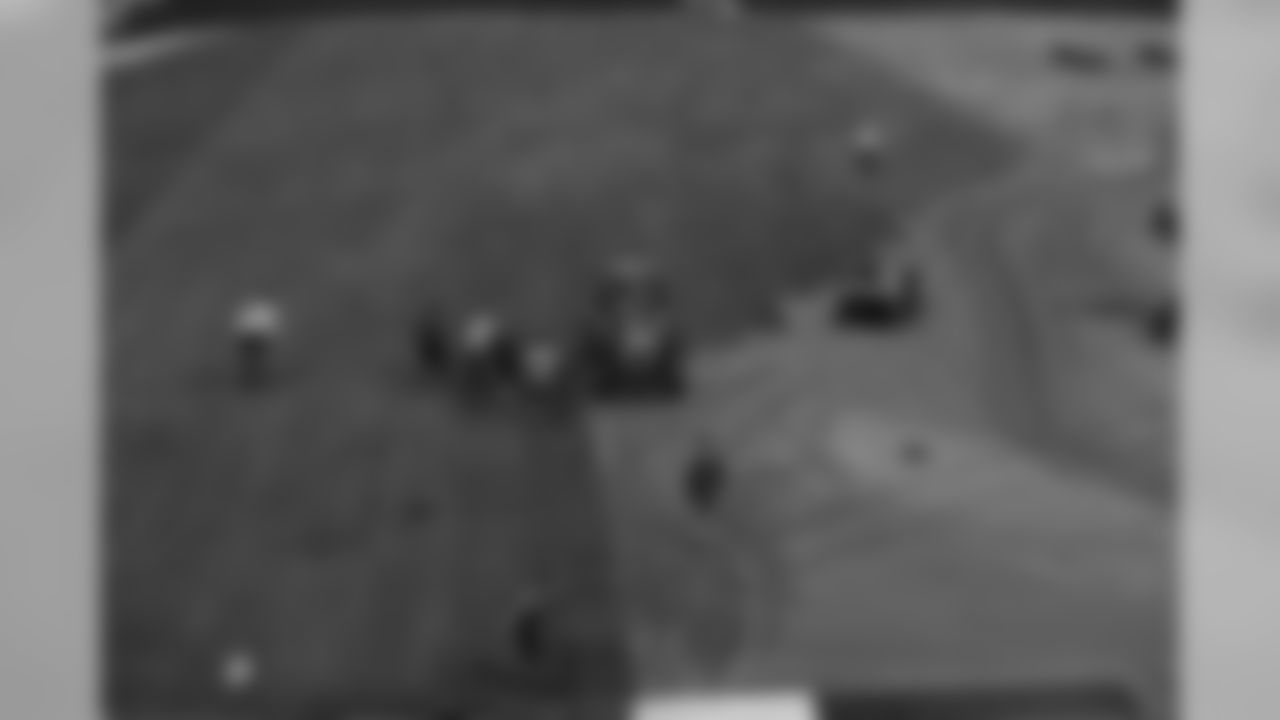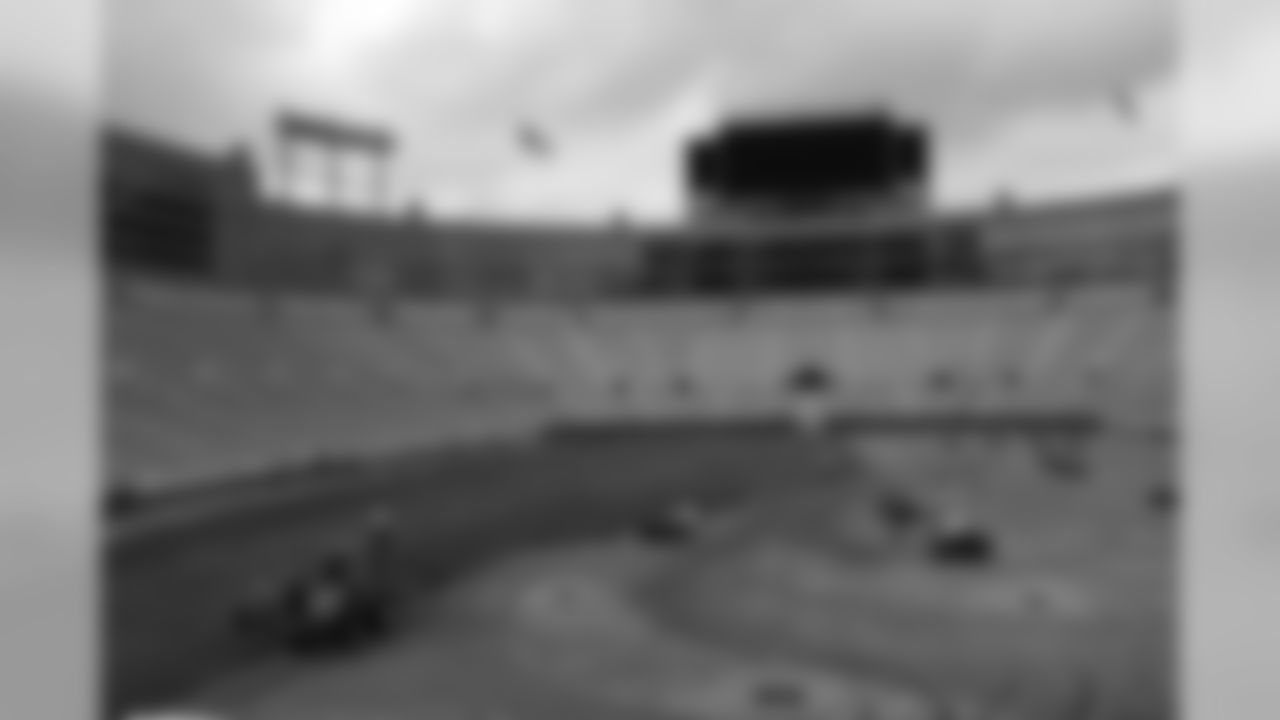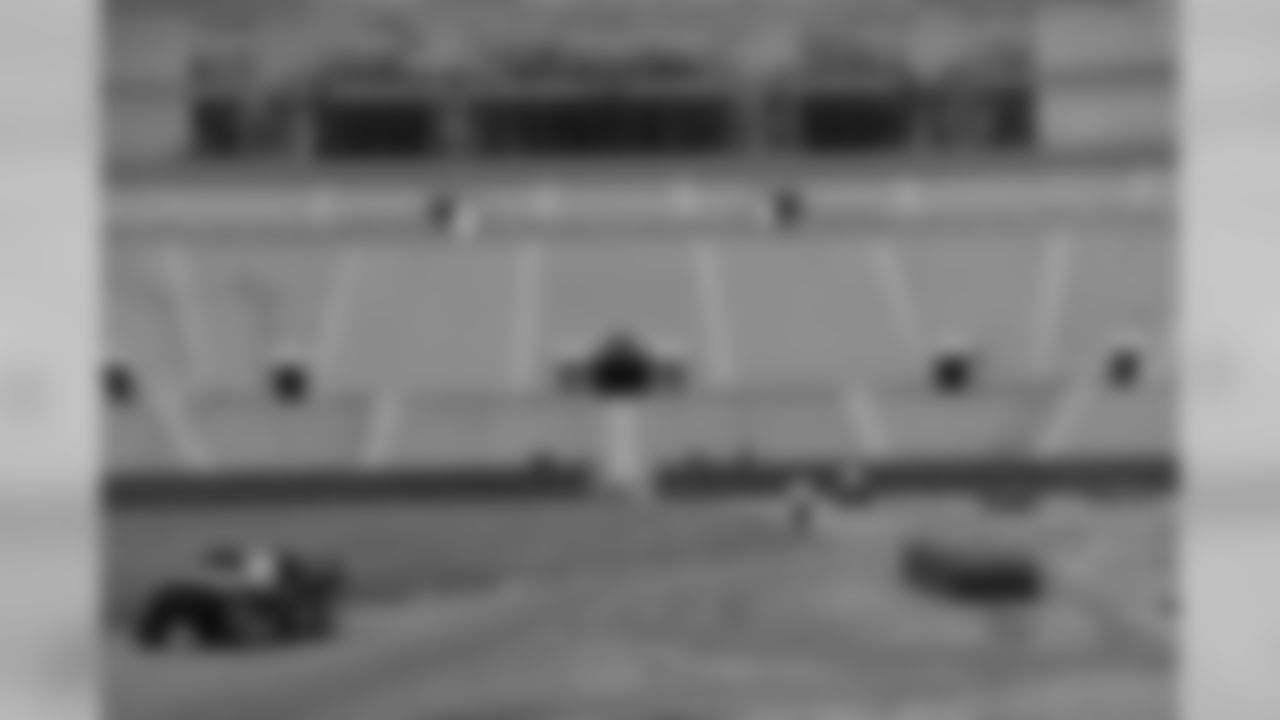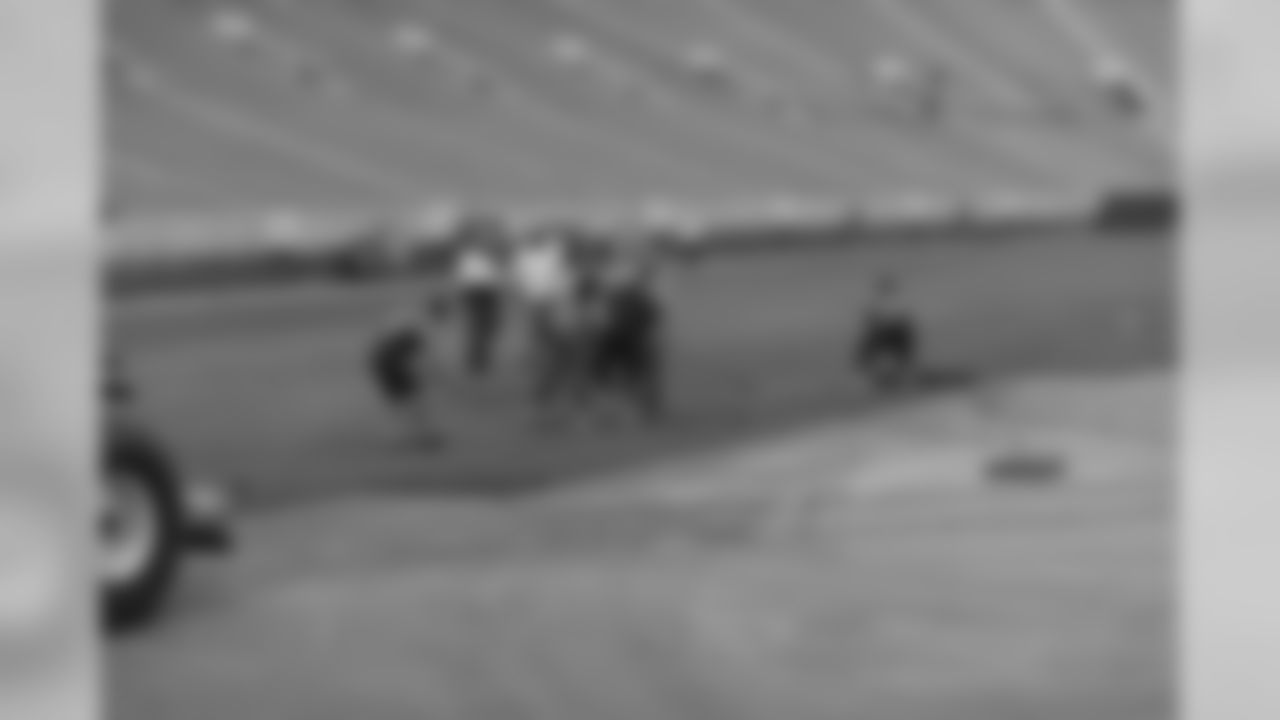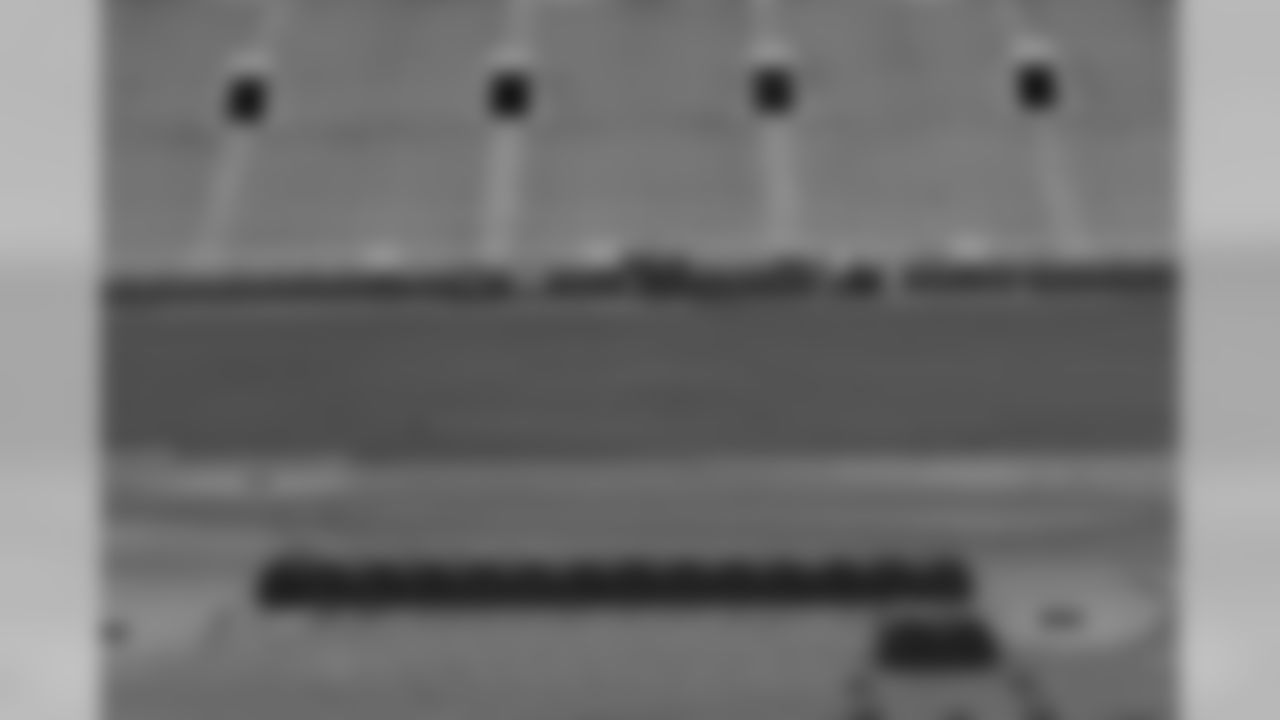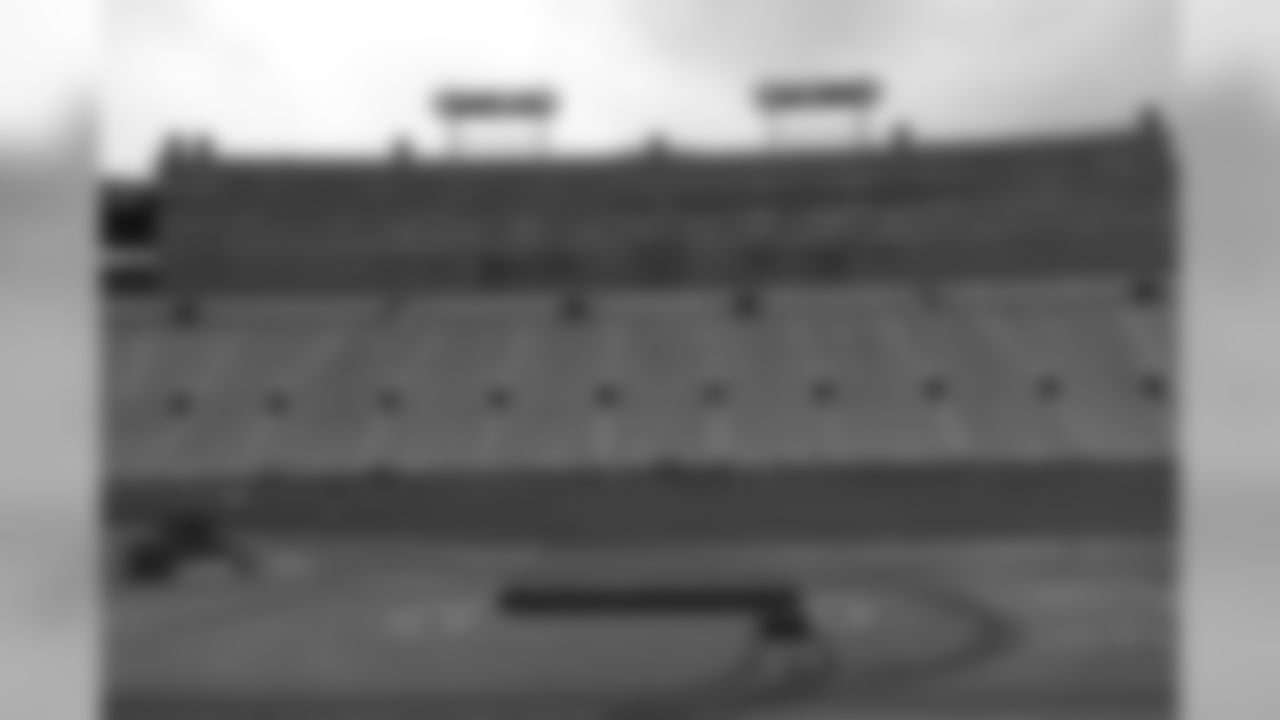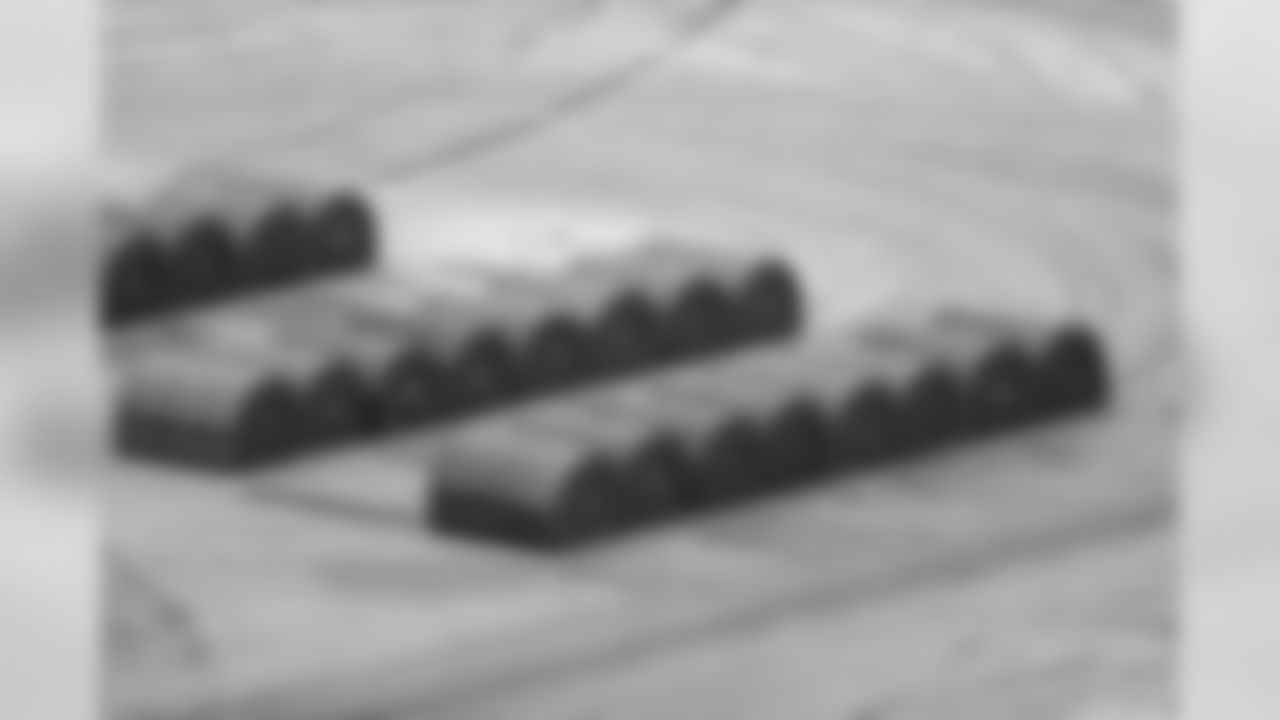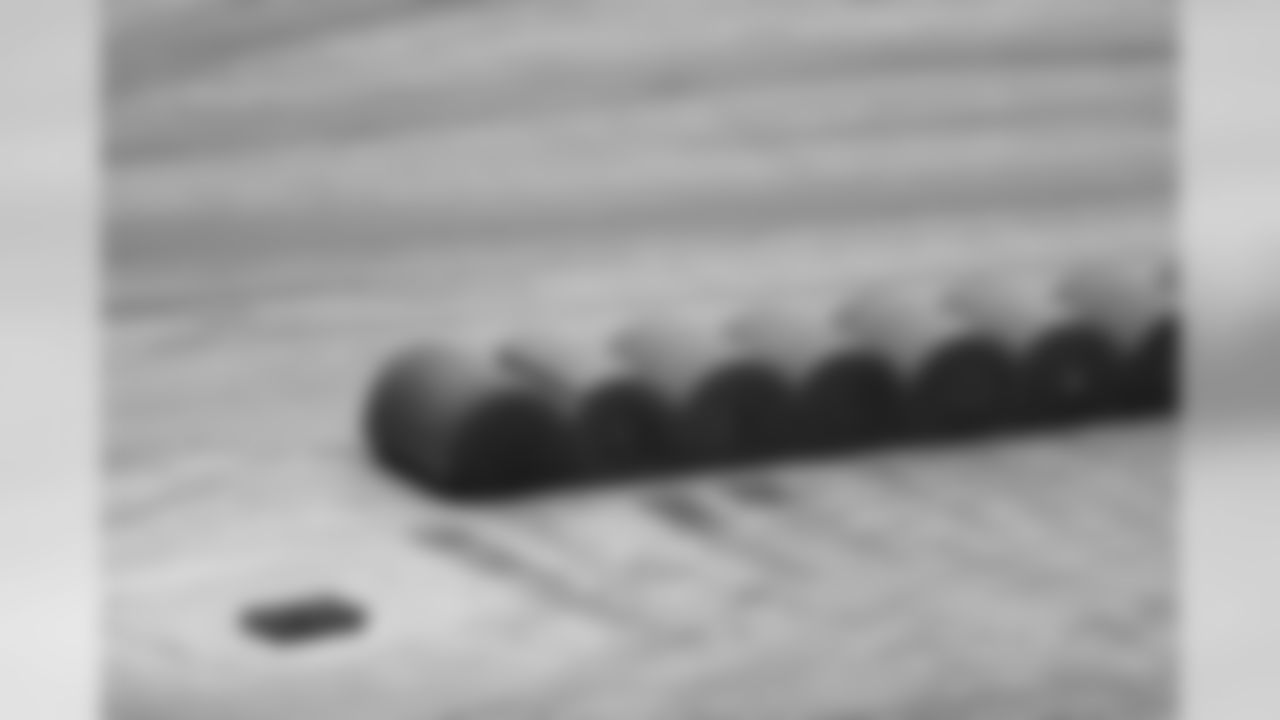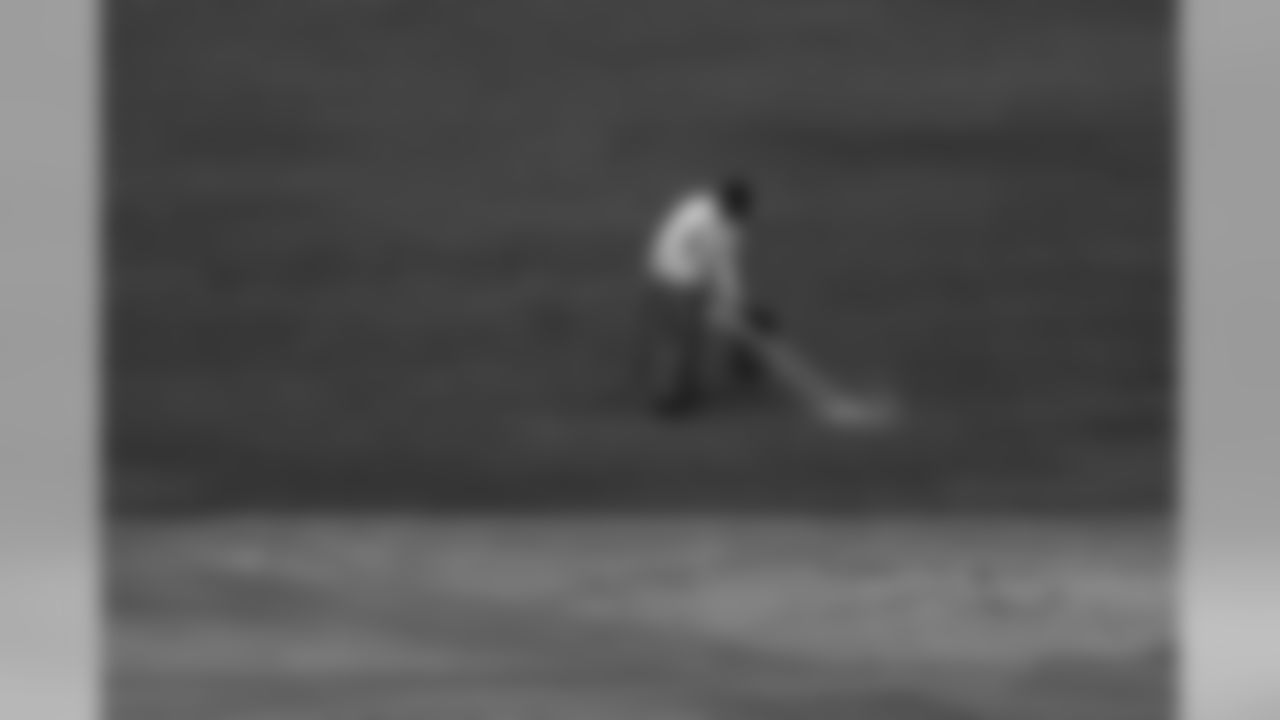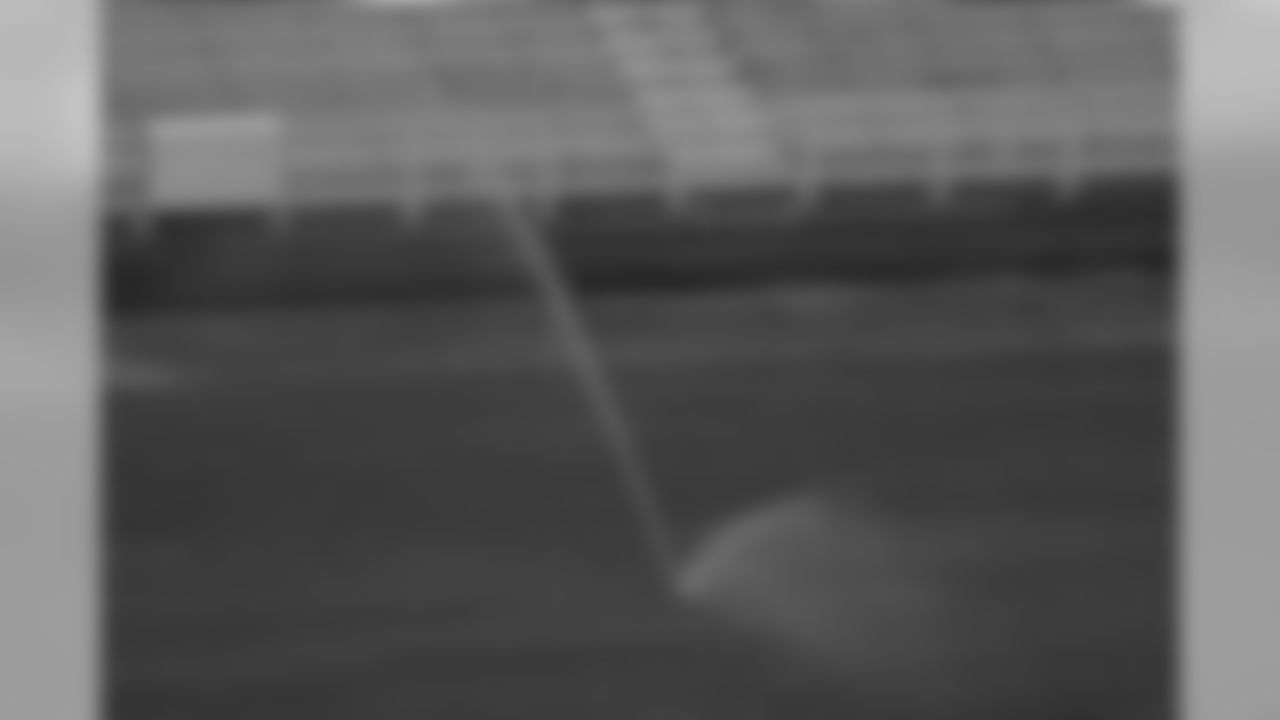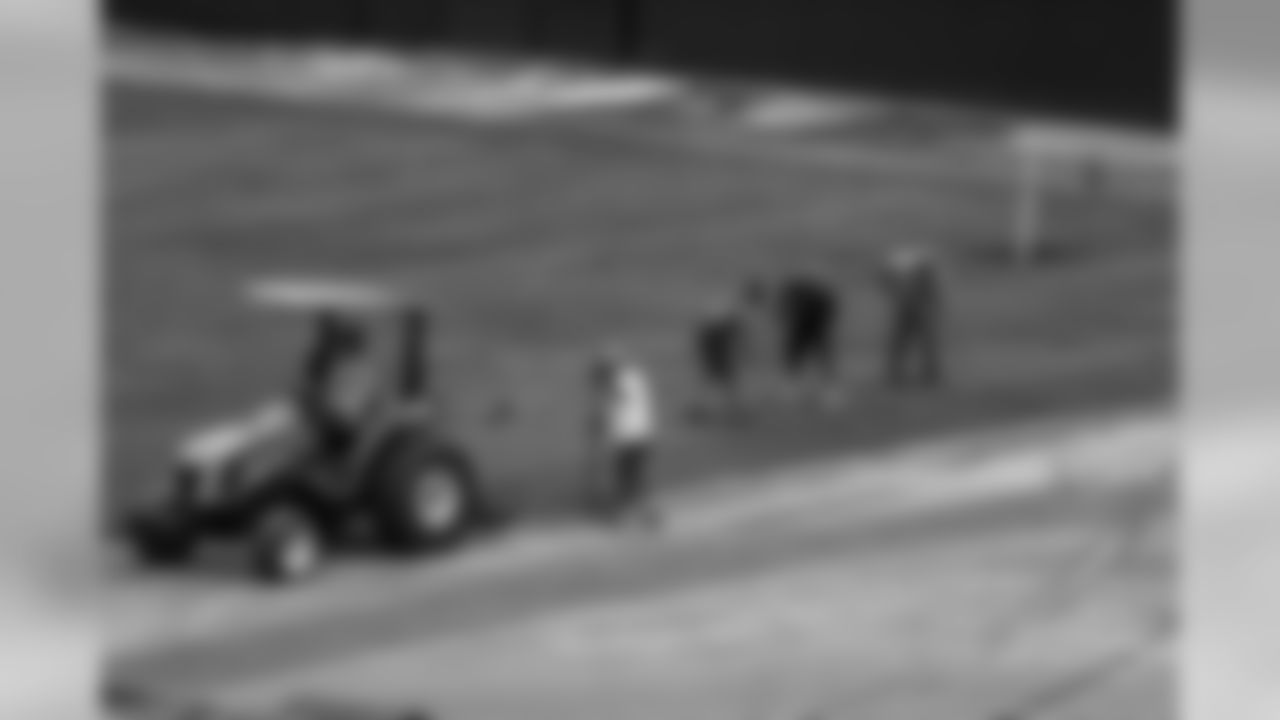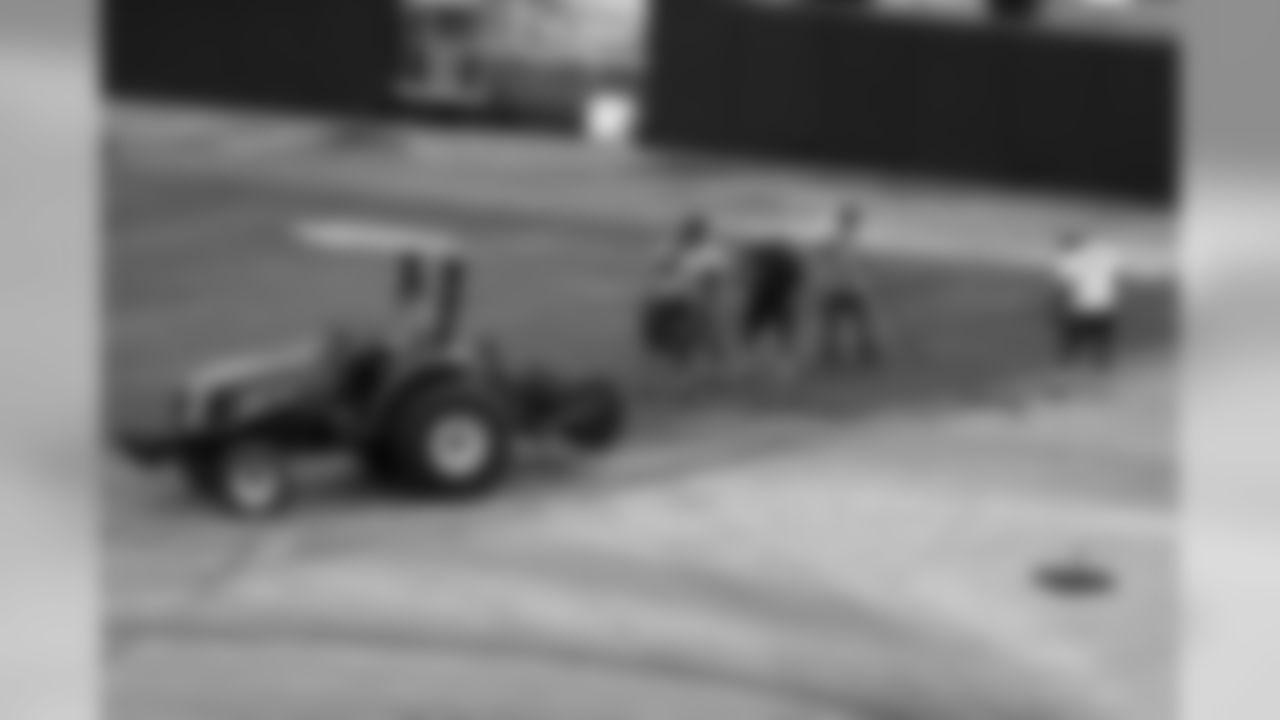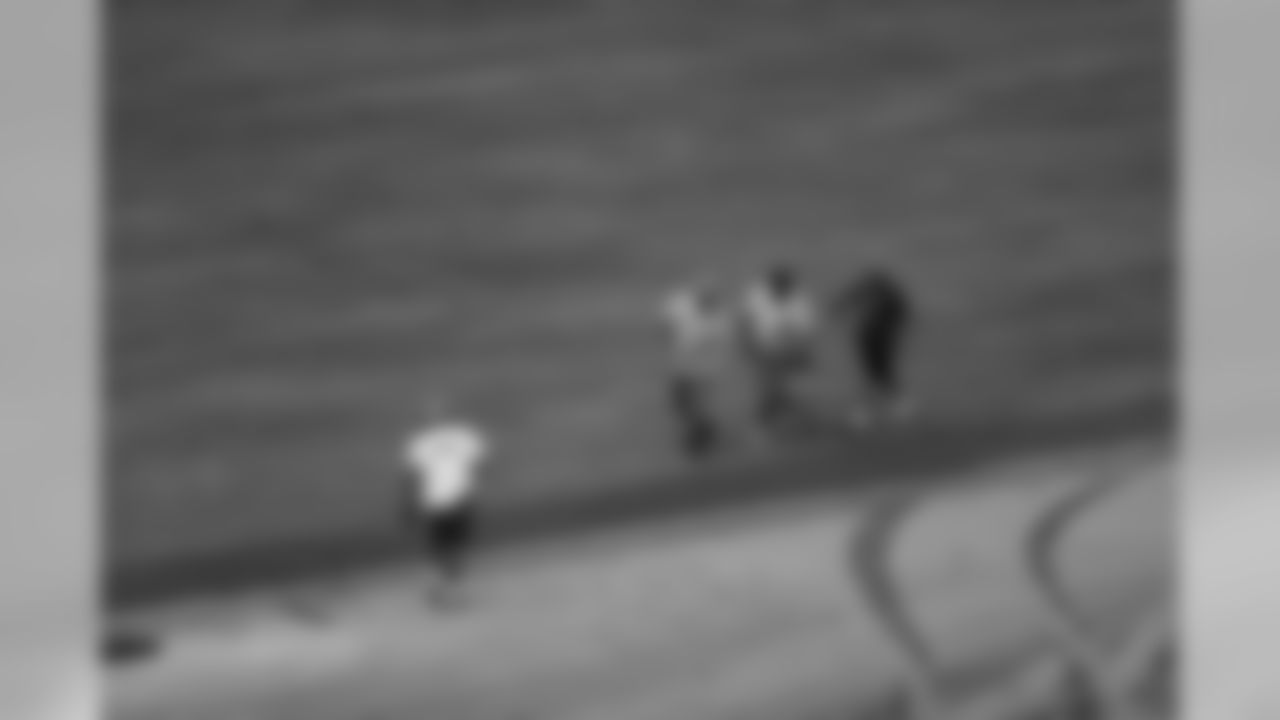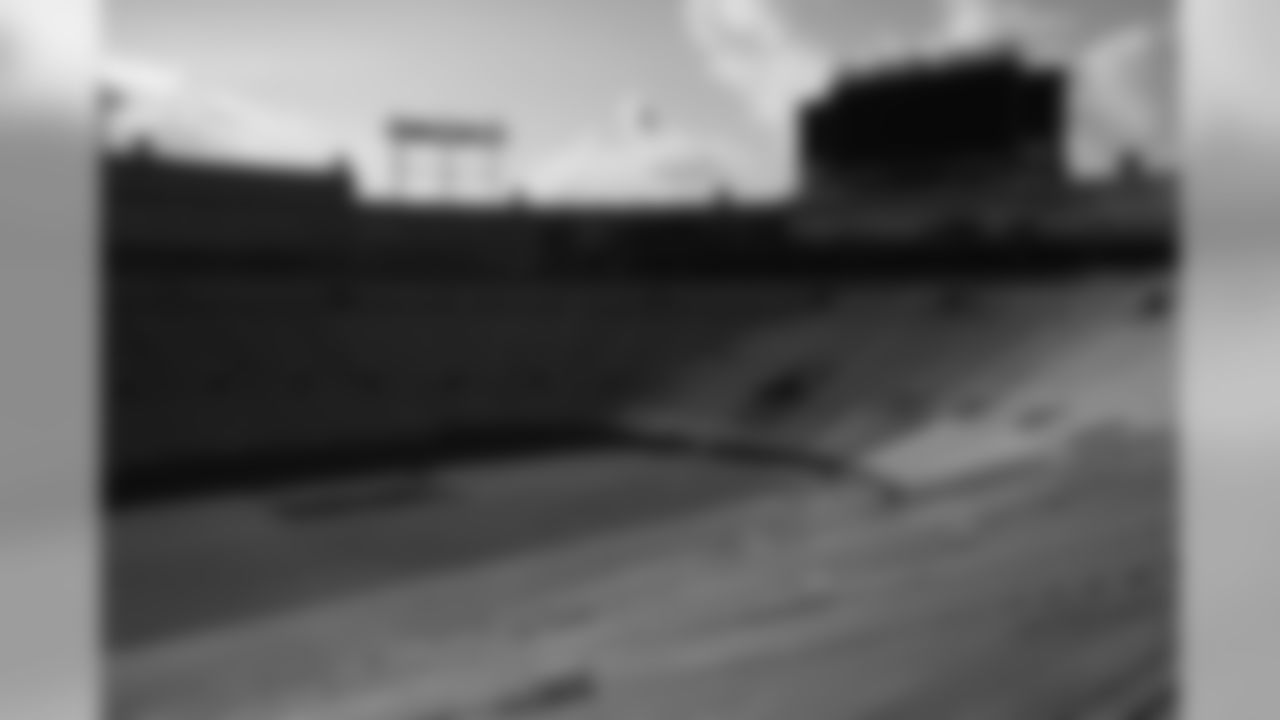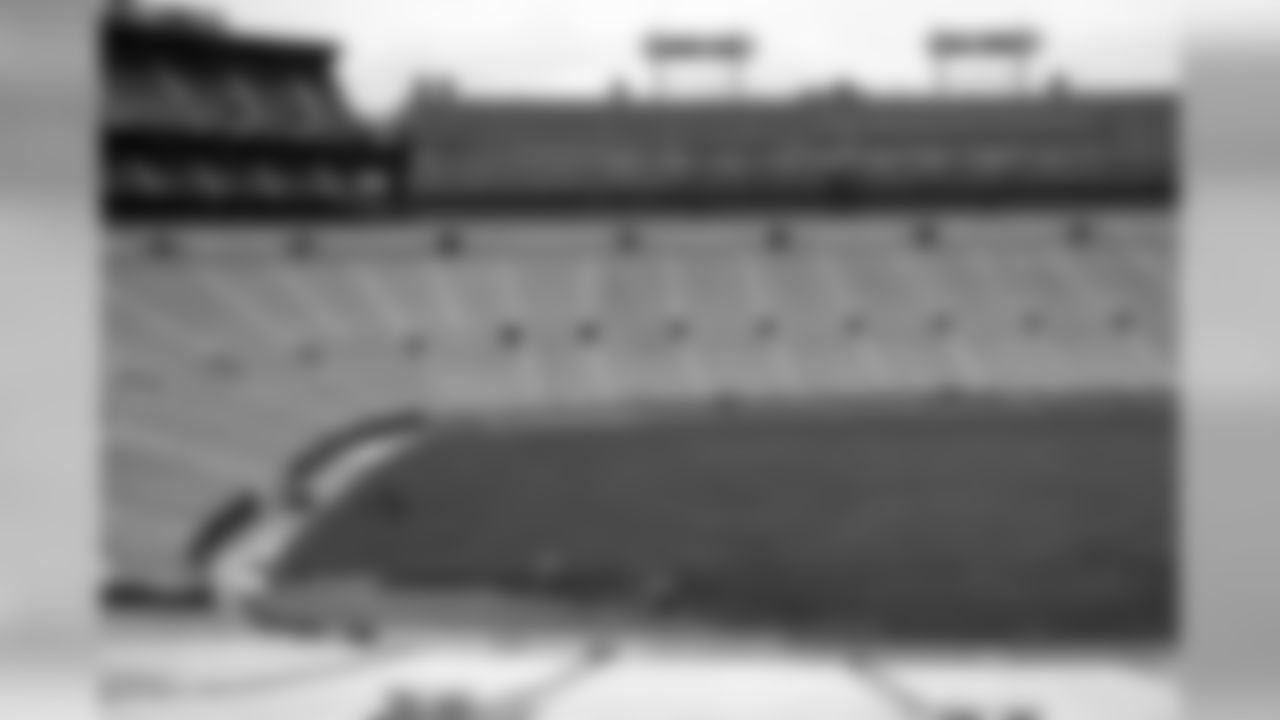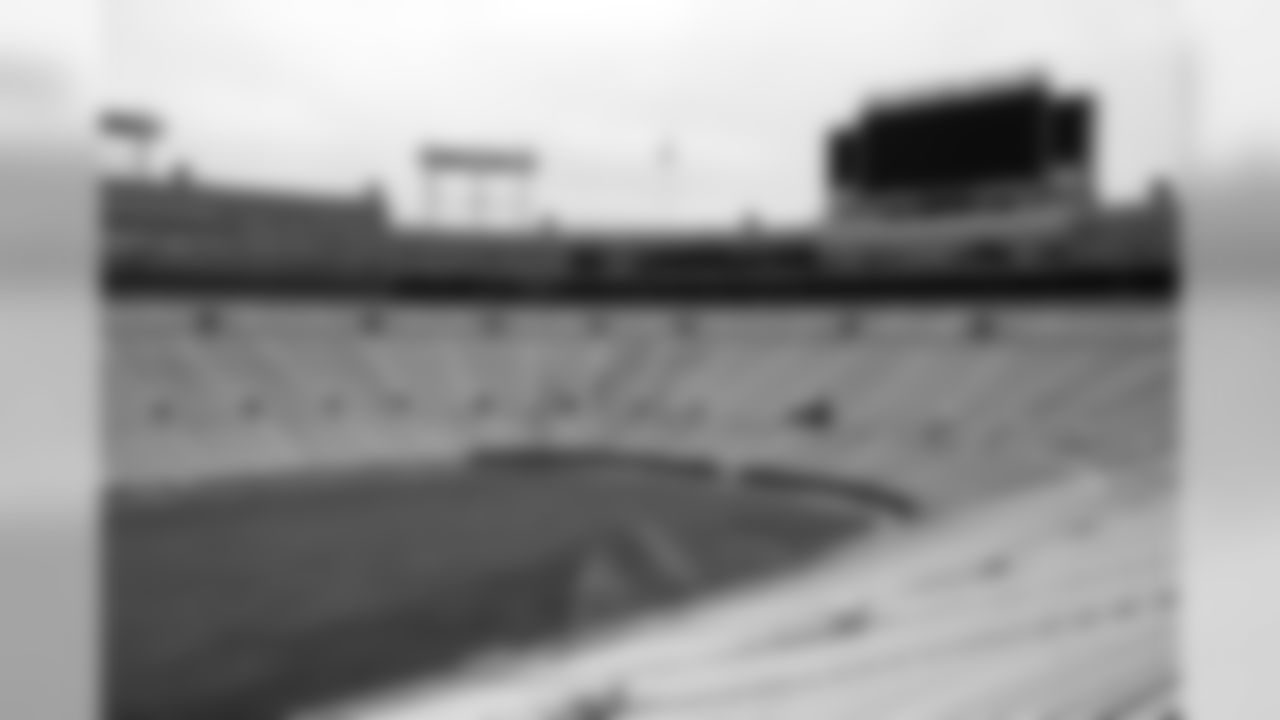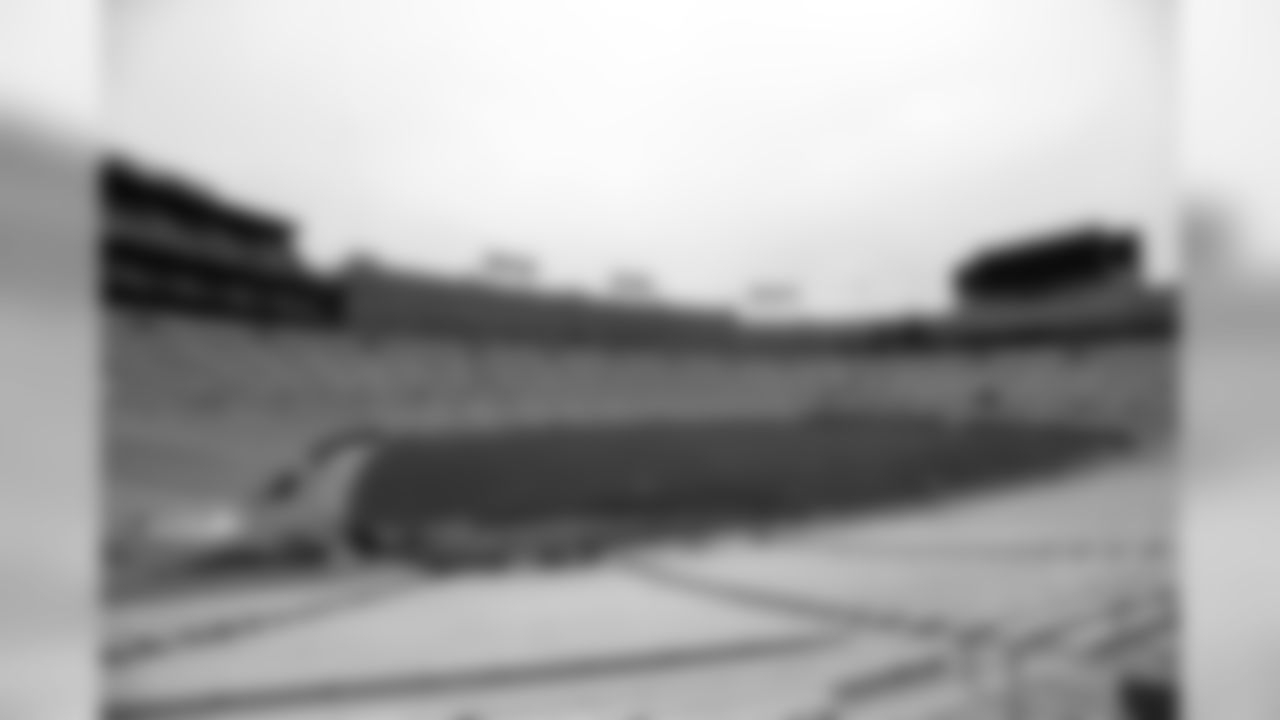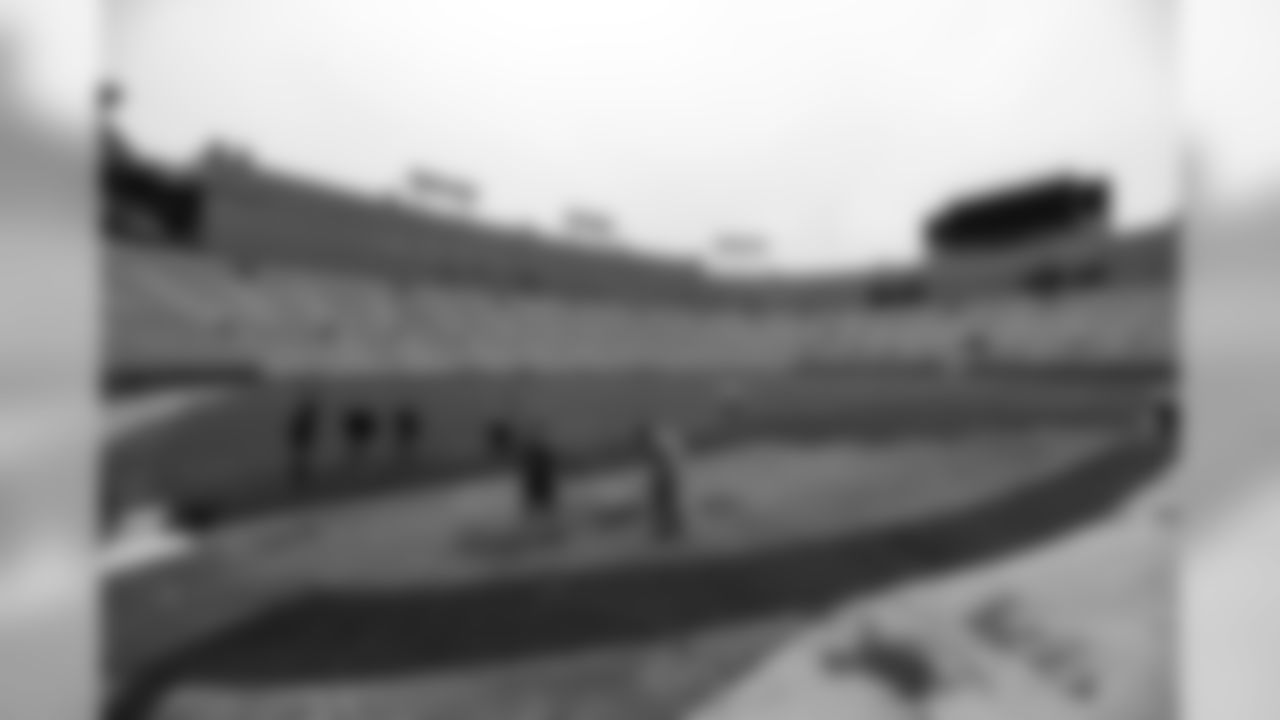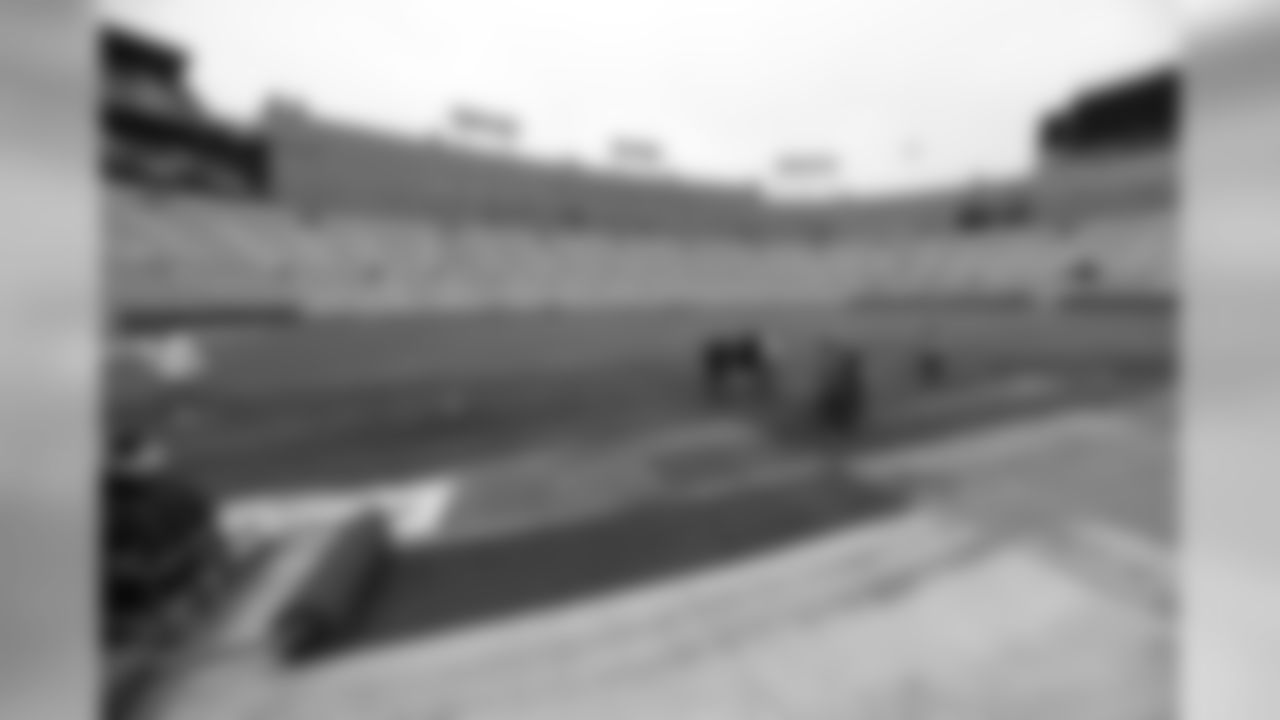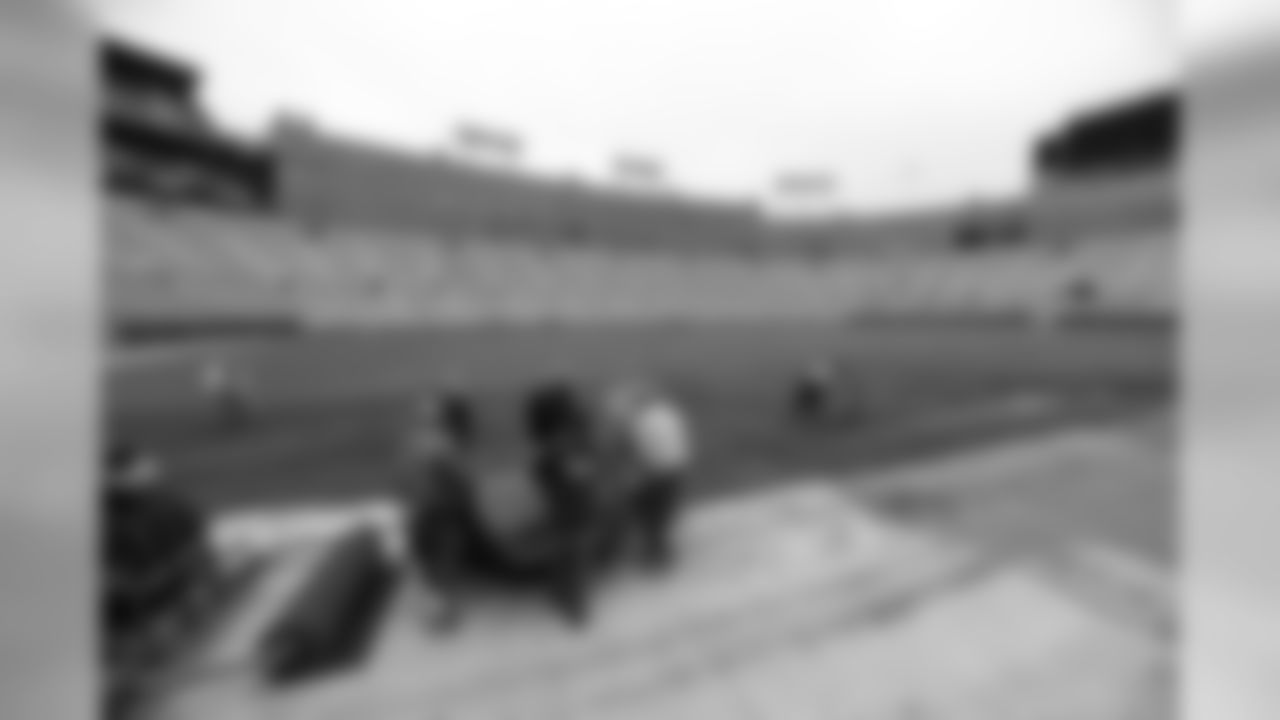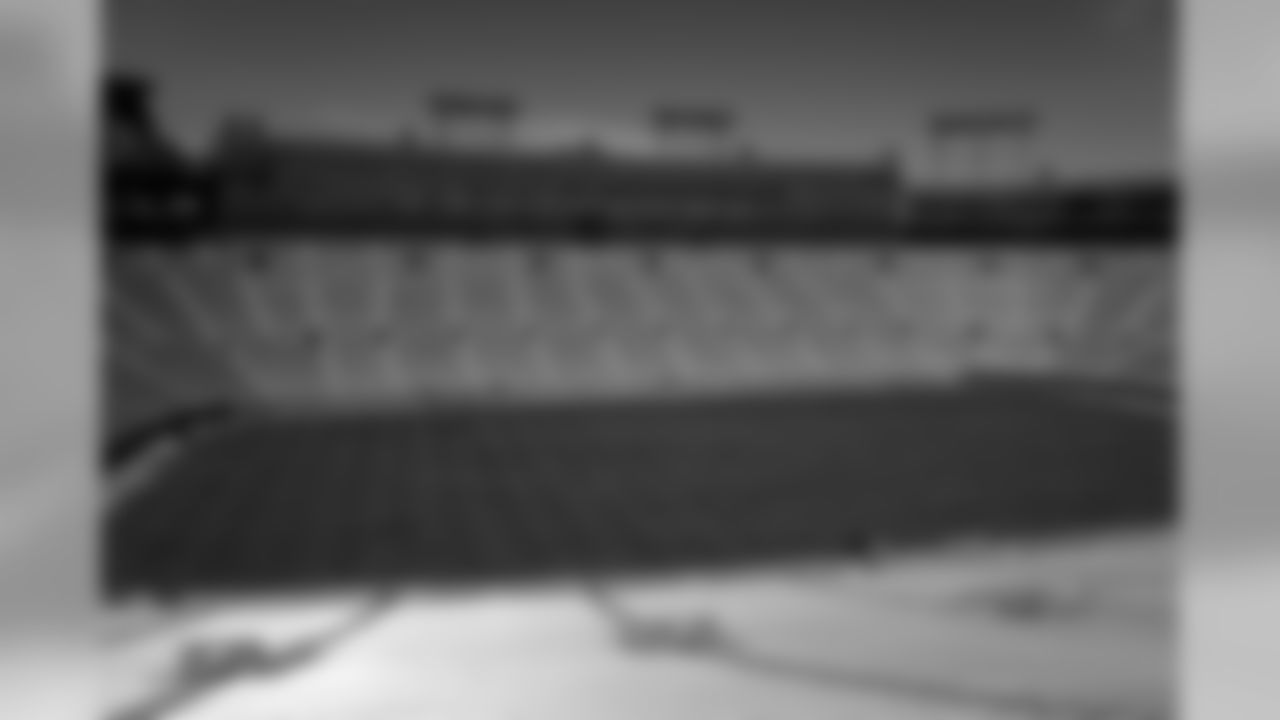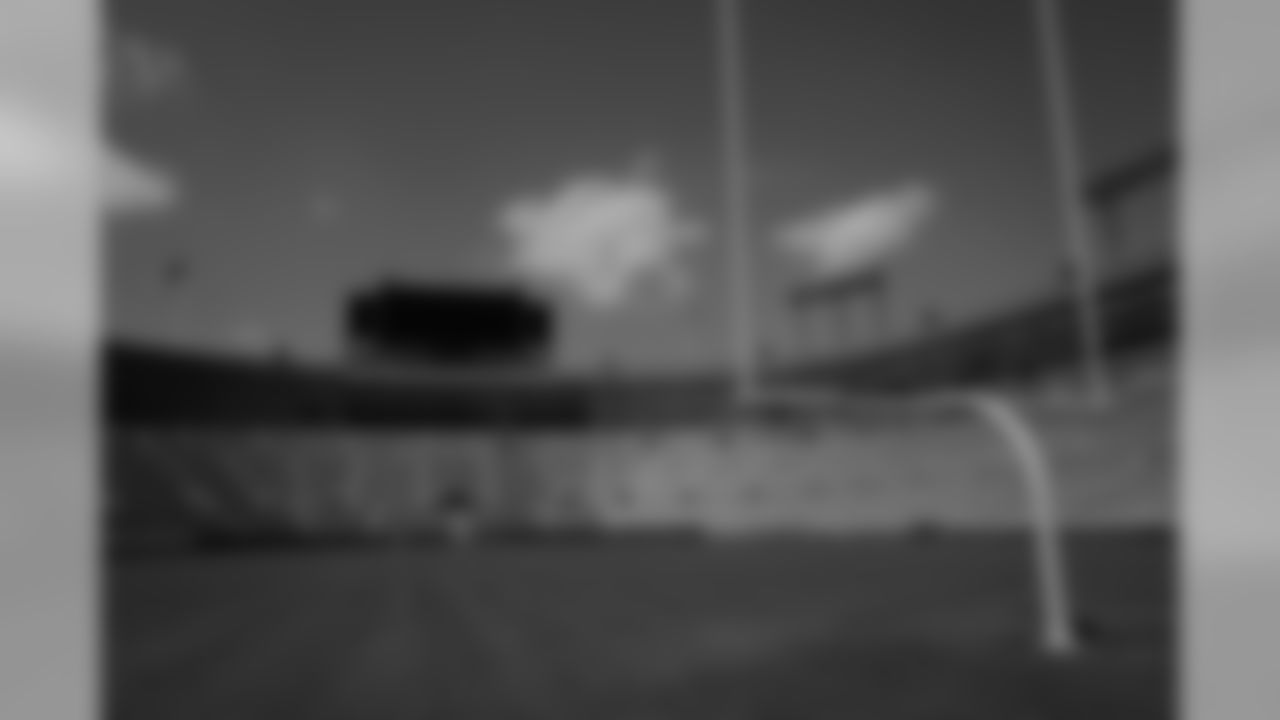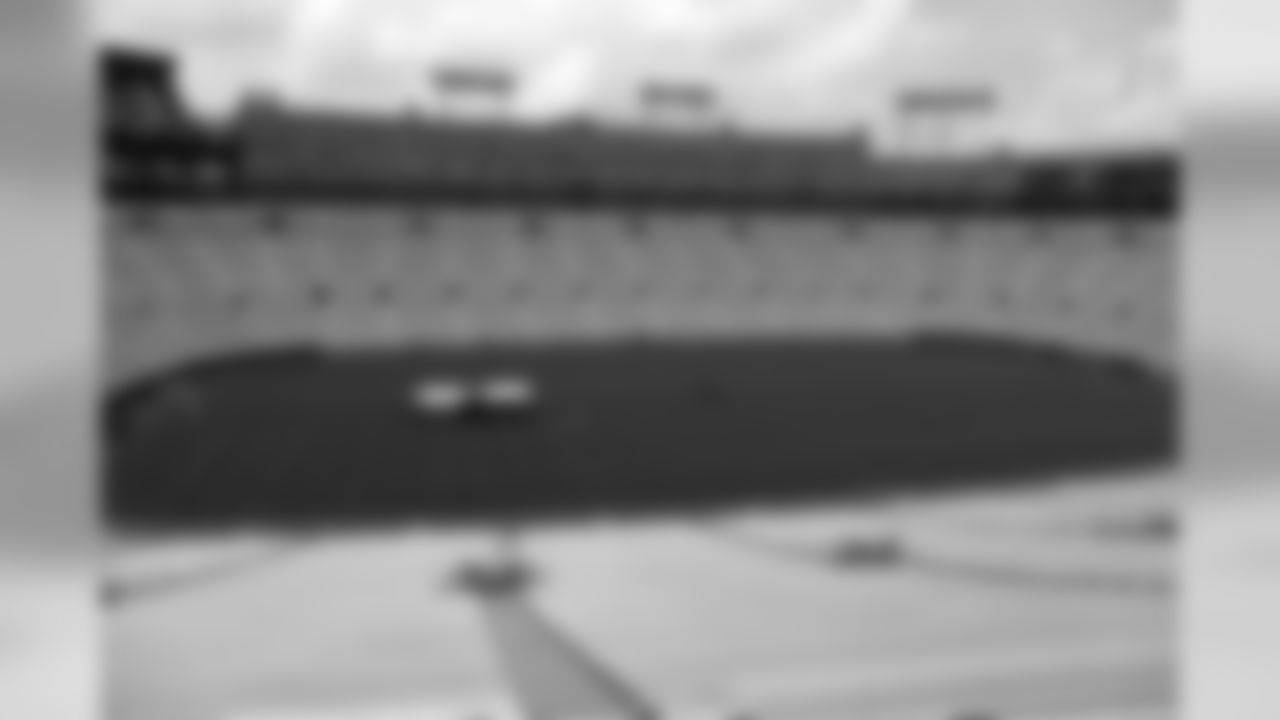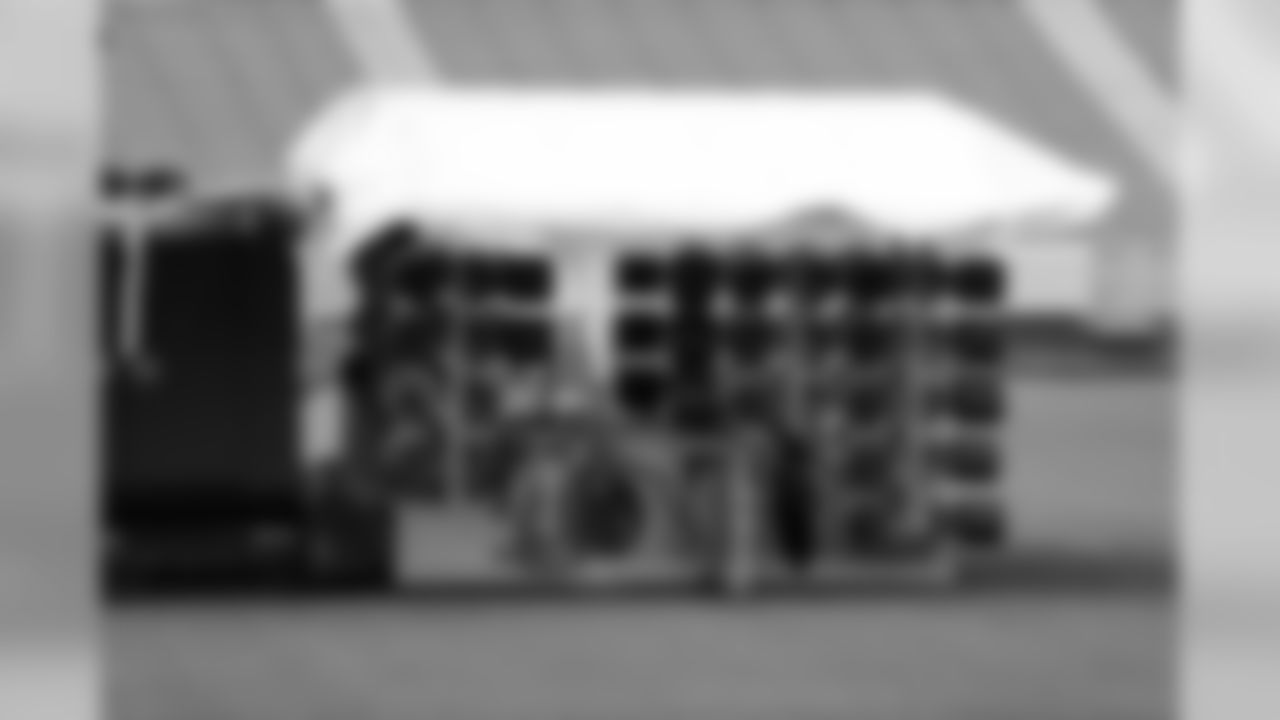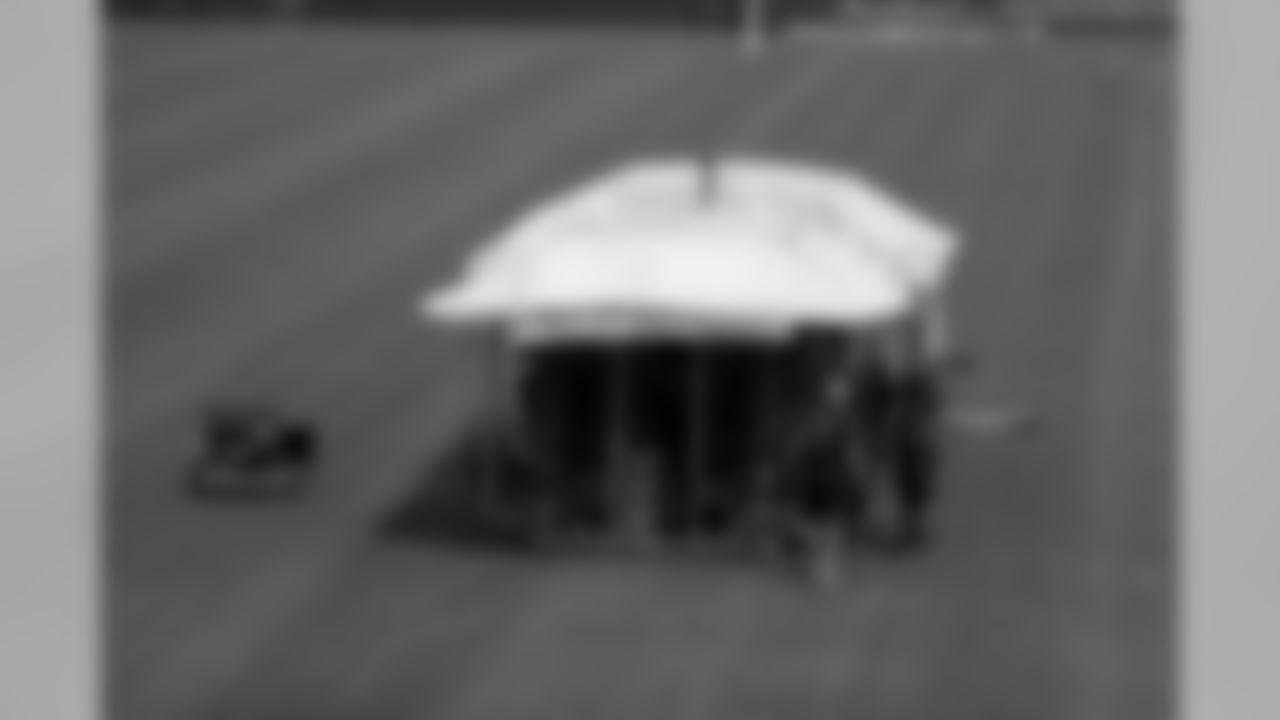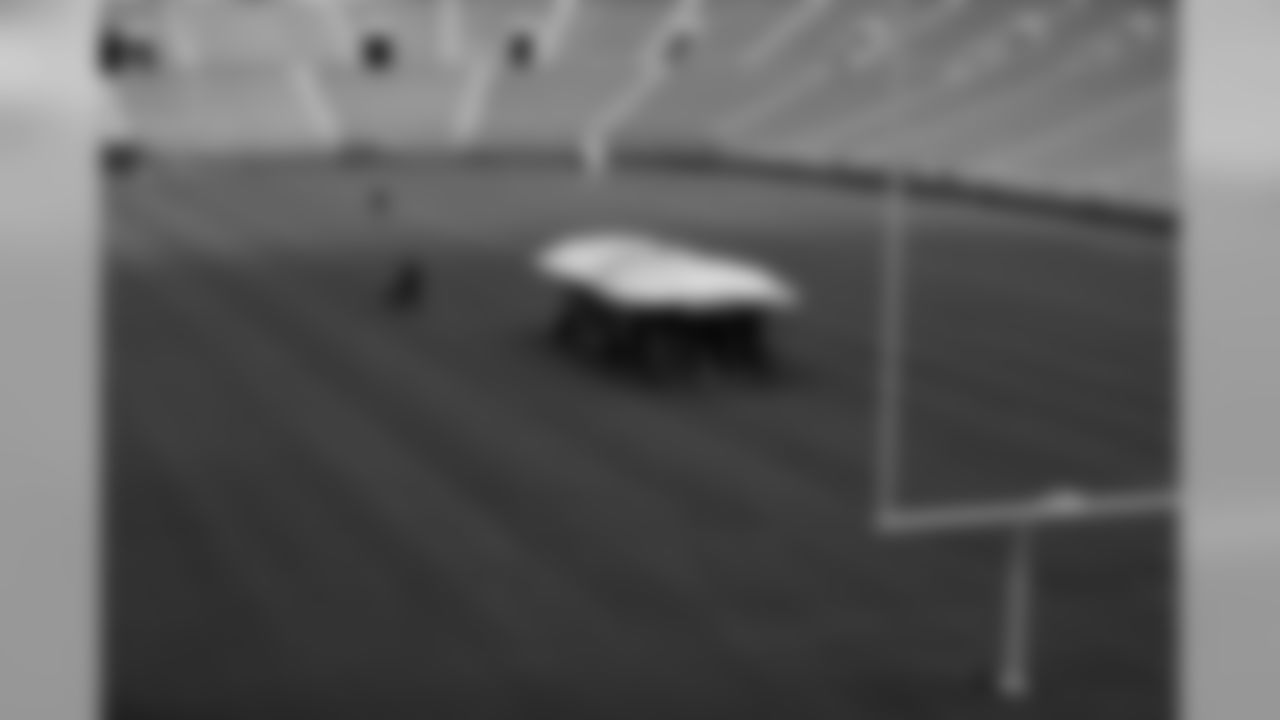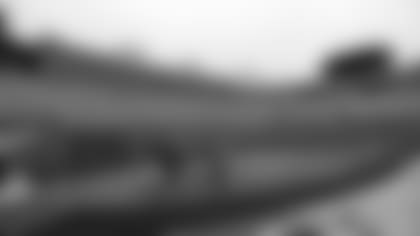GREEN BAY - While it might not be visible to the naked eye, a new playing surface awaits the Packers once the team runs out of the tunnel at Lambeau Field on Saturday for Family Night.
The organization recently completed a five-month reconstruction of Lambeau Field's turf, transitioning from the GrassMaster polypropylene fibers it installed before the 2007 season to polyethylene-based SIS Grass.
Although Lambeau Field houses the first SIS Grass field in the United States, the technology has grown in popularity on soccer fields throughout the world over the past decade.
Instead of the previous three-to-four-week timetable to stitch the field, a single machine shipped from Japan worked around the clock from July 9-16. It stitched fibers ¾ inch from each other and seven inches deep, sticking up just under an inch above the ground.
Synthetic fibers are intended to provide a safe stabilization for the sand underneath the field, preventing the ground from getting pushed around and becoming uneven over the course of a long season.
"The whole driver of everything is we want a sand-root zone," fields manager Allen Johnson said. "The only way to get good drainage is to have straight sand, but when you have sand, sand in itself isn't that stable. Picture the beach and then picture our growing season and 300-pound guys pushing on each other. The grass is going to wear and (you need) something to help stabilize the sand and give it some insurance."
The heating coils underneath the field allowed construction to begin in February. Roughly 15-16 inches of material was peeled off in layers and discarded to the parking lot near the Fleet Farm gate through a conveyer set up in the stands between sections 130 and 132 in the south end zone.
With the drain tile on the sub-floor remaining in place, more than 3,500 tons of sand were brought into the stadium – approximately 170 dump trucks – and smoothed over the heating and irrigation systems, which are atop a new laser-graded layer of pea gravel.
While an historic winter storm dumped nearly two feet of snow in mid-April, it did little to halt construction since snow drifts accumulated on the north side of the stadium, where a majority of the work already had been completed.
"We were really lucky. I'd say like four or five days delayed," Johnson said. "A majority of the snow ended up on the north end and the south end – where we were working – we had a little snow near the 50. We had to wait for that to melt but it was all a matter of a few days so it wasn't as bad. It was just a matter of clearing out that four-foot drift in the tunnel that was the problem and that didn't take too long."
Staying on schedule, crews replanted sod in spring and proceeded to stitch more than 2,500 miles of synthetic fiber into the Kentucky bluegrass field.
The organization used the opportunity to also rezone the irrigation system, which needed to be tweaked after the microclimate inside the stadium was altered following the South End expansion in 2014.
In doubling the amount of zones, the field crew can now water individual areas of the field when needed. The Packers took a similar approach with their new grow lights, which now can be amplified or reduced in certain areas of the field.
More pea gravel also was installed to shorten the depth of the root zone from 12-13 inches to 10-11, bringing the heat pipes closer to the surface.
The boilers and plumbing remain the same from the previous heating system, with the exception of the tubing that spans the field and connects to the main pipes. The Packers also switched out the rubber apron around the field to a new non-skid surface.
The turf will be put to use for the first time on Family Night in front of a sold-out crowd of more than 78,000 inside Lambeau Field.
"Day-to-day, I don't really have a boss. In reality, I have a million bosses if things aren't right," Johnson said. "When they're out there, I'm watching warm-ups and watching them really push. I'm watching from the knees-down in a football game at the beginning and watching their footing. I watch guys who are going fast and if they're cutting, it's a sigh of relief."
Johnson, who is in his 22nd season with the organization, is fully aware the last time the organization overhauled the playing surface in 2007, the Packers wound up hosting the NFC Championship Game.
If history repeats itself, Lambeau Field will be ready.
"There's a lot of pride. We love what we do. I love what I do," Johnson said. "It is special that what we take care of means so much to so many people. Absolutely. It makes it extra special. We think we have a good reputation and we hope people see that, as well. We do it for ourselves, for our organization, the team and hopefully the fans see it positively, as well."
Take a look at photos of Lambeau Field during the progression of the new field installation.
